-
Mac MAME Arcade emulation & NeoGeo using OpenEMU and SDLMame for Apple Silicon or Intel Native.
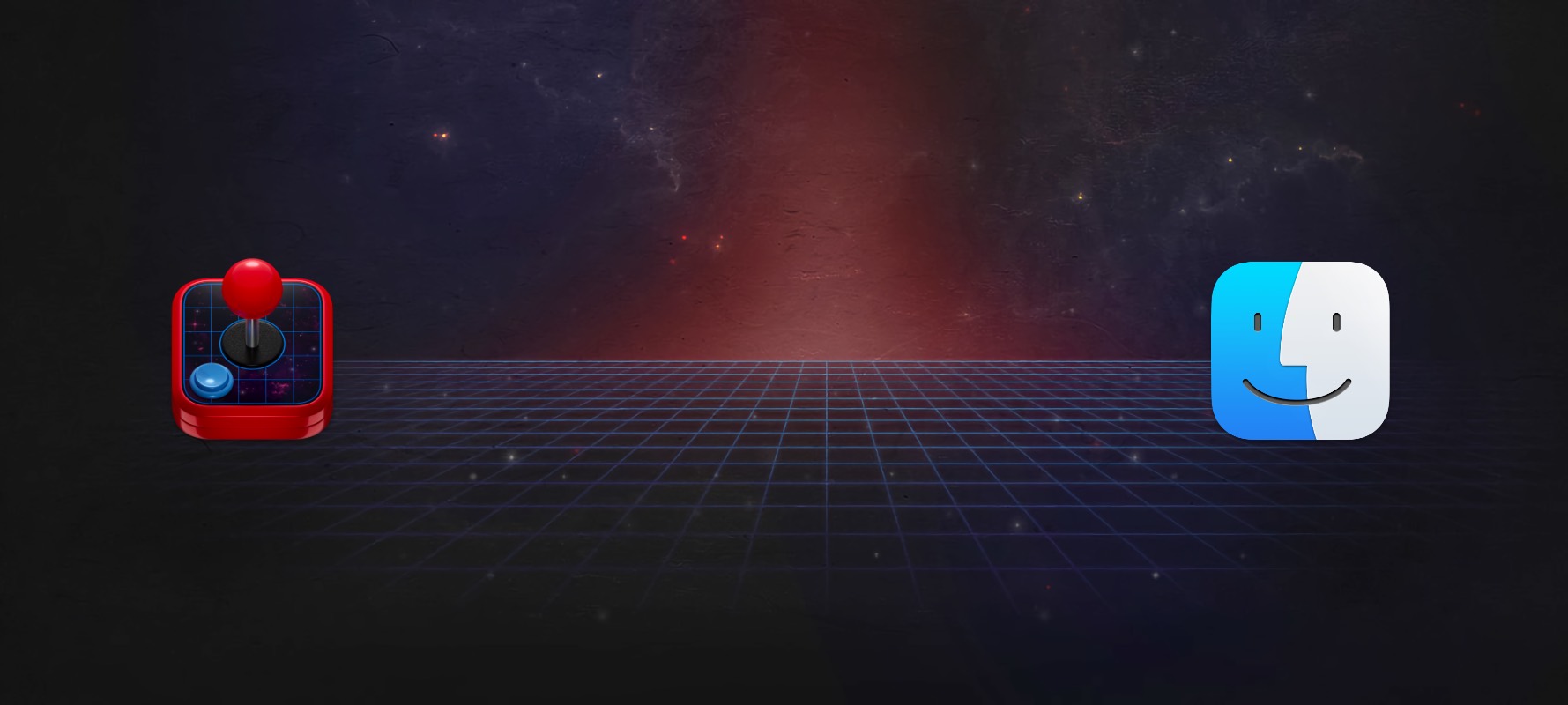
There are two main routes to get up and running with MAME under macOS, OpenEMU, and SDLMame. OpenEMU is the vector most users will want to use, but it isn't Apple Silicon native (but will still run fine in Rosetta). I've made a video, but if you're like me, you probably prefer the written version.
OpenEMU and Mame
OpenEMU is a beautiful core-based emulator (akin to RetroArch) that supports many game consoles. It's designed to be the one-stop-shop for Mac emulation, and it does a fantastic job. It's gorgeous and easy to use..
Step 1: Download OpenEmu Experimental
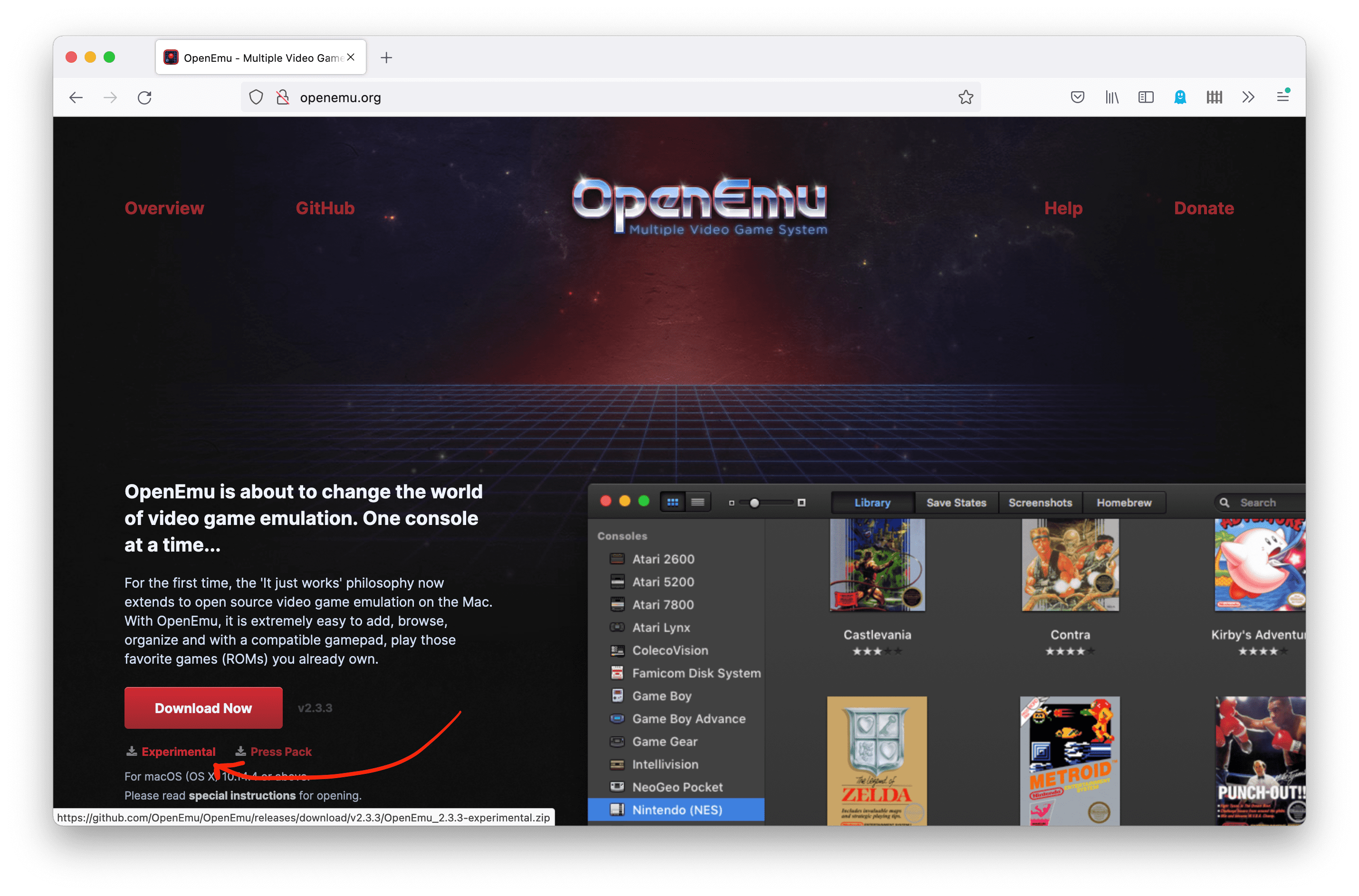
Regular OpenEMU does not support the MAME core, so you need to get the experimental version fromopenemu.org. I'm unclear as to why after years, the MAME version is still experimental. If I had to guess, it's likely because there are a few missing assets (the control menu for MAME doesn't have a skeuomorphic graphic, for instance), and it doesn't filter out BIOS files.
Step 2: Safelist MAME (Big Sur 11.x and above)
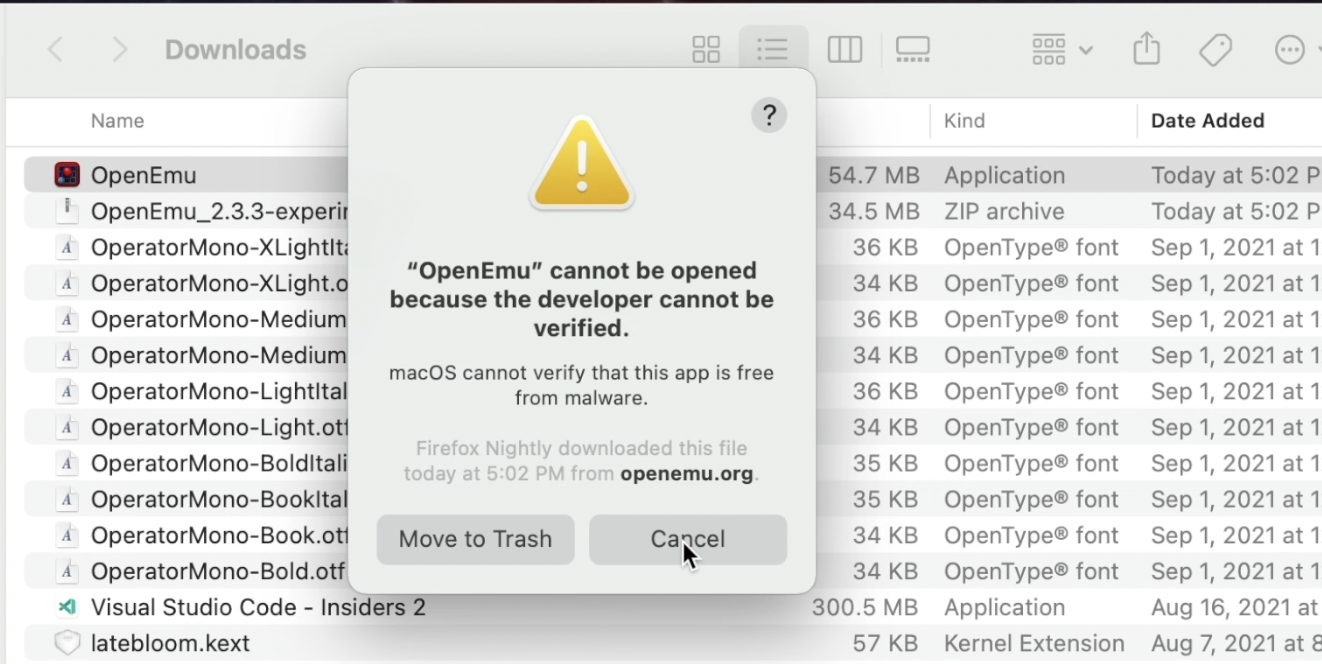
OpenEMU is open source but it isn't signed, you'll see an error if you try an execute it.
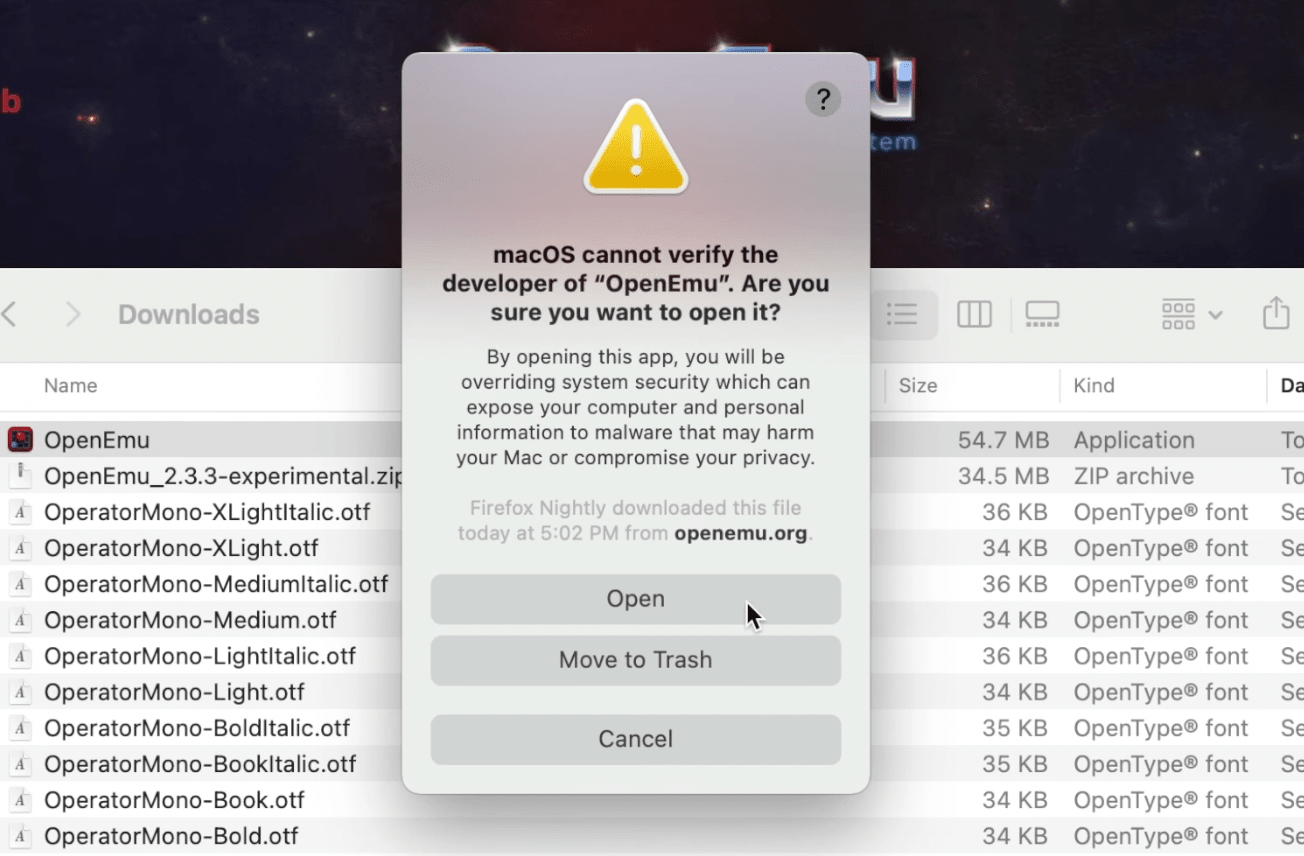
Right-click OpenEMU, and select open to bring up the prompt that will let you run the application.
Step 3: Install the MAME core
Launch OpenEmu, open preferences, and select cores. Click the install button next to MAME.
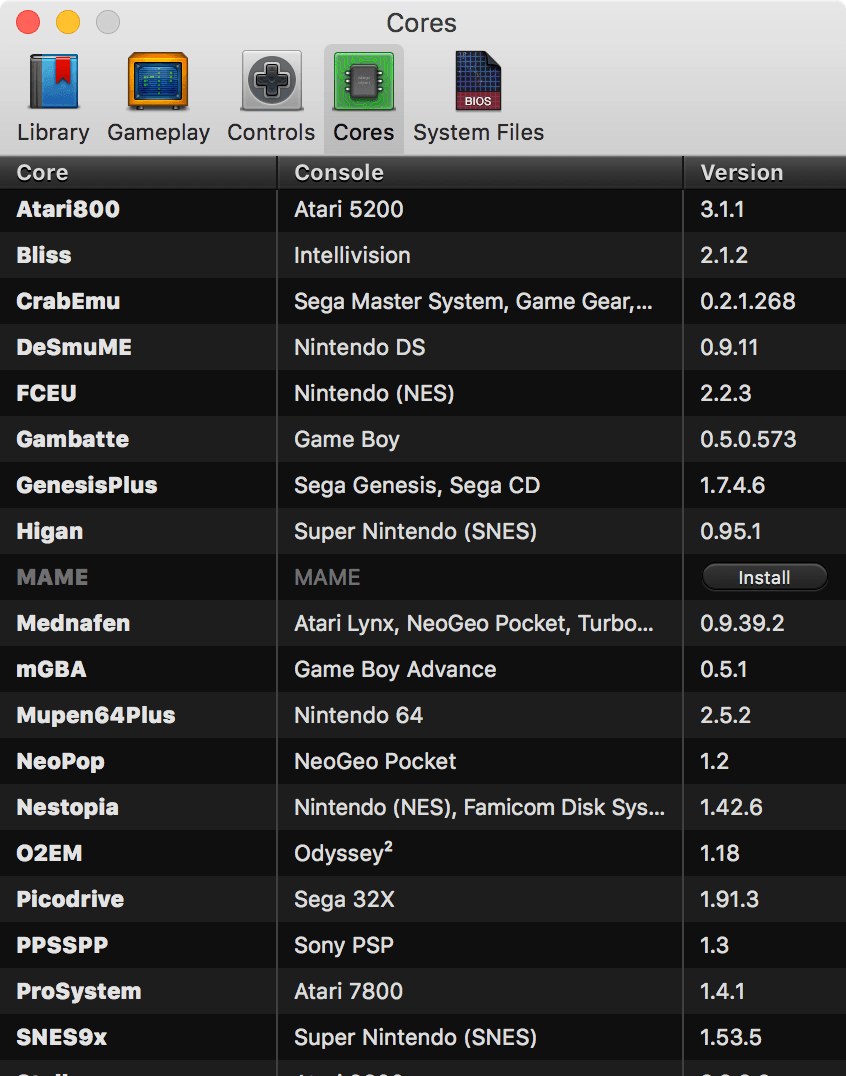
Step 3: Install games
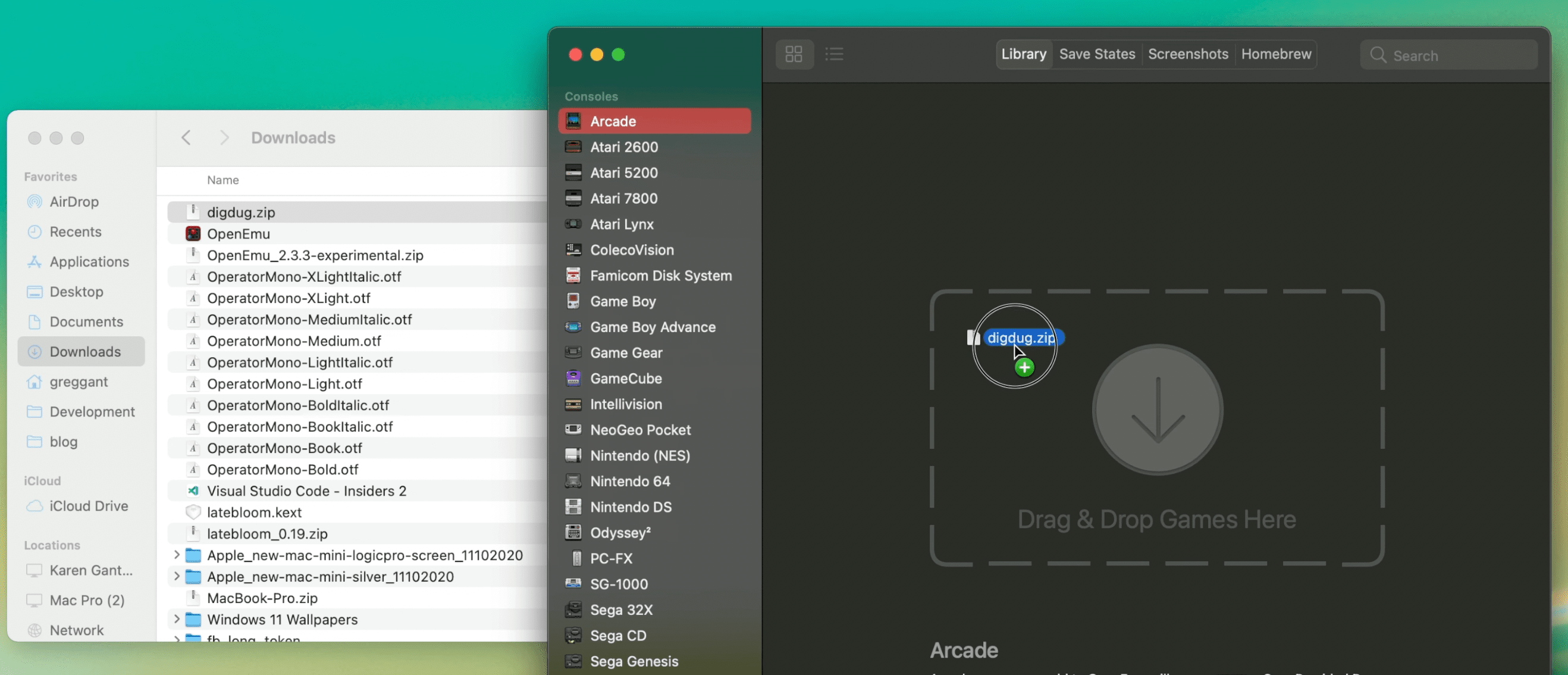
Installing games is pretty straightforward. Drag the .zip files into OpenEMU under the Arcade tab. MAME games are file name specific, unlike most other emulators, so do not change the name. Also some games have dependencies.
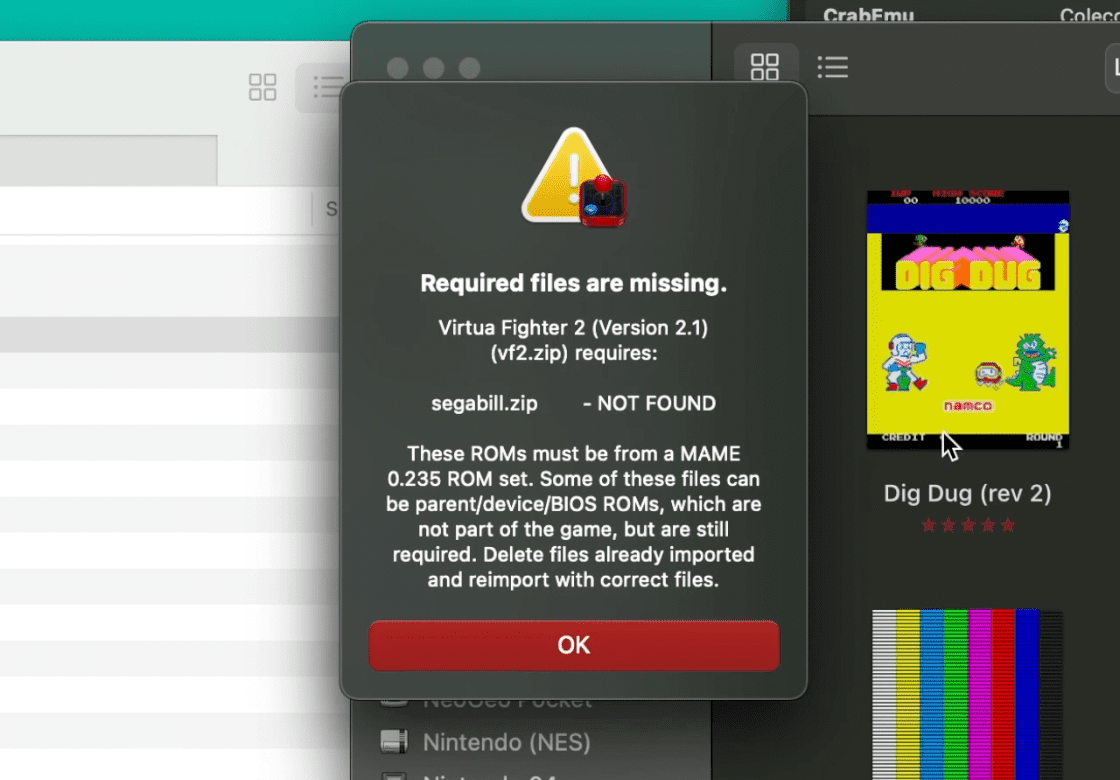
If the game you are trying to play has a dependency, it'll display an error when you try and launch the game, with the name of the missing file. You'll need to install that file by dragging it onto the window. Do not decompress MAME game .zip files.
Please do not ask me for game files. They exist in a legal grey area. Try a popular search engine or archive site like Archive.org for information about ROMs.
Step 4: Optional: NeoGeo Emulation
Emulating NeoGeo games requires one extra step, you'll need to get the NeoGeo BIOS Rom. Drag the Neo Geo zip into OpenEmu. You'll see the NeoGeo ROM in your game list, but ignore it and double-click the games as you normally would. I had some difficulty finding one that worked in more modern distributions of MAME.
SDLMAME / MESS
SDLMAME is a macOS port of MAME and MESS that features both native Intel and Apple Silicon support and (previously) has been updated much more frequently than OpenEMU's MAME core. For years, OpenEMU was stuck at MAME version .149.1, from 2013. As of writing this, OpenEMU is currently in lock-step with SDLMAME as both feature version 0.235, but OpenEMU is not Apple Silicon native. SDLMame is a port of MAME by @sdlmame_osx. It also features MESS which emulates many retro consoles as well.
The downside is that SDL Mame's UI is pretty minimal, and it requires being launched from the command-line but works great.
Step 1: Download the SDL2 Framework
Go to libsld.org, and download SLD2 for macOS and decompress it. Next, install the SDL2.framework into (in your root)
Library/Frameworks. SLDL2 is a library for cross-platform development designed to provide low-level access to hardware such as I/O and graphics cards. Many Steam ports for macOS are based on this library.Step 2: Download SDLMame/Mess
Go to sdlmame.lngn.net, and download Apple Silicon or Intel version depending on which type of CPU your Mac has. Decompress it into a folder of your choosing.
Step 3: Safelist SDLMame/Mess
This is where things get a little strange, as if you try and execute SDLMame, it'll give you the same warning as OpenEMU. Right like the
mameunix executable and click open. It'll open the terminal and crash. This is fine. Close this terminal. The application has now been safelisted.Step 4: Install ROMs
Drag your ROMs into the ROMs folder within SDLMame (If it doesn't exist, create one). Just like OpenEMU games may require dependencies. NeoGEO games require the Neo Geo BIOS.
Step 5: Launch SDLMame using the terminal
YYou'll need to navigate to the directory that SDLMame is in (or locate it). The easiest way is to use the change directory command then drag the folder onto the terminal. It should look something like:
$ cd /path/to/sdlmameNow that we're in the directory, we can check to see if we see the mame executable using list.
$ lsIf you see mame, you're ready to go. Launch the mame executable.
$ ./mameSDLMame's UI might seem a bit rough but it does support the mouse. Be sure to use the configure options with Device Mappings and General Input to configure your game controls.
Happy Emulating!
-
Every OS X Snow Leopard Abstract Desktop - in Glorious 5k and 8k Resolution




Every macOS comes with some standout desktops, one of the better sets was Abstract series but they're from a bygone pre-retina/4k/5k/8k world. I really loved 512 Pixel's Every Default macOS Wallpaper – in Glorious 6K Resolution post. If you haven't checked it out, you should. I've used them and loved it. Feeling inspired, I decided to do the same to one of my favorite set of Mac desktop backgrounds, the Abstract series from OS X 10.6 - Snow Leopard.
I upscaled and denoised (originals had some JPEG artifacting) and hand touched up them tediously in 16-bit P3 (dithered down to 8-bit P3 JPEGs). I had to make the tough calls on cropping so rather than live with my choices, I've included the 8k originals in the 16:10 aspect ratio for those with 16:10 displays or looking to crop the desktops as they see fit. There's 8 total desktops and I'll probably do an iPhone update and possibly light/dark updates for a few. For now, enjoy!
Download Abstract 5k 16:9 Ratio - 26.6 MB
Download Abstract 8k 16:10 Ratio - 49.1 MB




Every OS X (macOS) 10.6 Snow Leopard Nature Desktop - in Glorious 6k Resolution
Oh hey, I also converted all the nature background from 10.6 to 5k too, check it out here!

-
The end of the classic Mac Pro
Two nights ago, I decided to put my thoughts I've had for months now about the classic Mac Pro into a video. I've personally moved on and retired my Mac Pro 5,1 after spending the last 13 years using a cheesegrater Mac Pro as my primary computer. The Mac Pro enabled me to achieve a lot of my creative and professional achievements: recording two albums, contract work on a few TV shows, and a career change into web development full-time.
BBuying a new computer would be a fairly non-significant life event for most people, but I've spent the last three years updating and maintaining a guide on the classic Mac Pro. If you'd like, watch the video below or continuing reading as I'll provide a written summary below as I understand many prefer written words over video, as I'm one of those people too. My perspective is coming from a practical standpoint as I'd gauge most of my readers to be in the practical camp as opposed to the hobbyist camp where the utility isn't as important.
Leaving the classic Mac Pro behind...
A few short months ago, I bought a 2019 Mac Pro, replacing my classic Mac Pro, a 2010 dual CPU Mac Pro, outfitted with 96 GB of RAM, two NVMe drives, a Radeon VII, and two Sonnet pro series USB cards (USB-A and USBc), as well as a lot of internal storage. Originally, I really didn't think I'd ever been able to justify owning a 2019 Mac Pro. I could certainly afford one, but it's an irresponsible purchase as my needs for a computer do not require a Mac Pro 2019 as a UX/Web Developer. For nearly the last decade, I've used a slew of 15-inch MacBook Pros: 2013 (Retina), 2015, and still currently 2017. Then, the pandemic happened... and things changed for the classic Mac Pro.
Prices went wacky. During the pandemic, used electronics (and cars) skyrocketed in price. For reference, I bought my dual CPU Mac Pro 2010 in late 2017 for $800. I sold it (granted with better specs) for $900 in 2021. GPU pricing went through the ceiling, tripling in value. As I watched the prices climb, I had a crazy idea: if I sold my Mac Pros (two 5,1s, one dual CPU, and one single CPU), the Radeon VII and Vega 56 separately, quick back of the napkin math put me at roughly $1500 shy. I'd pull the NVMe drives and large SSDs and HDDs. I inventoried hardware I hadn't used in ages and added a semi-functional dual CPU tray for a 5,1, studio preamp, a set of Beyerdynamic headphones, an Oculus Quest 2, to name a few things. All said and done; it'd get me only a hundred dollars shy.... except I was about 15 years from my last eBay sale, I failed to calculate the eBay commission, which is heavy, roughly 18%.
I listed and sold my items, many extremely fast (I probably could have charged more for many items, but I was interested in a quick turnaround). I managed to be about $500-$700 short. With the money in hand, I balked several times ordering 2019 as $6000 is.... well... $6000. Inevitably I pulled the trigger.
#1: The classic Mac Pros cannot boot the latest macOS
The Mac Pros have been in a hackintosh-like state ever since Apple dropped official support for the classic Mac Pros after Mojave. Installing Catalina required either using DOSDUDE1 or, better, OpenCore. OpenCore is an open-source bootloader that does many things. The Mac Pro's implementation of EFI is not UEFI as it predates UEFI by a few years. This means a few inconsistencies. Apple's EFI and UEFI use different basic drivers for the pre-boot menu/screen. For Mac Pro users, non-Apple EFI GPUs will not output video until the full drivers have been loaded, which is late in the boot process. OpenCore fixes this by loading the correct drivers. It also emulates other Mac's UEFI, meaning macOS runs transparently without requiring software hacks to the OS itself. This is preferable to patching like DOSDUDE1 as you apply OS updates as there isn't a patch that can be overwritten. OpenCore also allows for various drivers and low-level tweaks, thus making hot-swappable Thunderbolt 3 possible on the classic Mac Pros as well as enabling full video decoding/encoding support.
While all of these minor miracles have greatly benefitted the cMP, with Big Sur 11.3, the Mac Pro hit an unlikely impasse. Apple, in a point release changed the PCIe bus handling with downstream effects to the classic Mac Pro. The cMPs can and will boot above macOS 11.2.3, but the PCIe bus, under certain circumstances, will cause kernel panics. Eventually, it'll corrupt the boot drive and require restoring.
This singular change influenced more than anything else that the clock was ticking for the classic Mac Pro. Apple typically provides security updates for a year to previous releases, and many applications generally support at least the previous version of macOS. Pixelmator Pro, for example, supports 10.15 Catalina, but not 10.14 Mojave. Xcode and Final Cut Pro X generally only supports one OS behind the current. This means the Mac Pro will be left out on the latest versions of some popular/major apps in two years.
Another huge hit is that Big Sur 10.4 added support for the 6000 series AMD GPUs. While it may be somewhat absurd to think about sticking an expensive brand new GPU into such an old computer, an AMD Radeon 6800 was supposed $579, which is less than the Radeon VII was pre-pandemic pricing as the VII MSRPed at $700 (and usually sold on the aftermarket for more). The 6800 might not be fully realized in such an old computer, but it certainly would perform much better than the VII. Thus, today's best GPUs are still limited at the 5700 XT and the Radeon VII for macOS.
#2 Windows 11 requires TPM 2.0
Despite Microsoft calling Windows 10 "the last version of Windows", MS is releasing Windows 11. There's one monumental change that has many people upset and requires Trusted Platform Module 2.0, a security feature that requires late generation Intel and AMD CPUs. MS lists that 8th generation Intel or AMD Zen 2, although 7th Generation Intel CPUs are "partially supported". Microsoft hasn't made it very clear on such issues. You can install Windows 11 on unsupported hardware with a bit of hacking, but that places Windows 11 in a hacked state, and it's unclear if this is a maintainable route and puts any unsupported computer in a precarious unsupported state. MS could easily require later generation instruction sets like AVX, and this would effectively drop support for the classic Mac Pro. Windows 10 will be supported until 2025, so the timeline isn't nearly as imminent as macOS.
#3 The GPU crisis
The biggest selling point of the classic Mac Pro is that it can use GPUs natively in a PCIe slot, whereas all other Macs sans 2019 required eGPU solutions. While GPUs aren't severely bandwidth-intensive as PCIe 2.0 16x vs. PCIe 3.0 16x barely makes a difference, the bandwidth-restricted world of Thunderbolt 3 incurs a higher performance penalty. The outcome resulted in Mac Pros performing better in pure GPU benchmarks over an iMac Pro outfitted with the same GPU in an eGPU enclosure.
However, due to the pandemic/bitcoin/whatever, GPUs are still absurdly expensive (but dropping in price as I write this). This makes the most attractive feature of the Mac Pro out-of-reach or at least justifiable. The GPU crisis also has affected the used Mac Pro market. Most Mac Pros are sold with non-metal compatible GPUs, which are incredibly out-of-date, cannot run macOS 10.14 and above. For the cost of many GPUs, a user could buy the Mac Mini M1 and see better performance for many workflows. The M1's iGPU will run circles around the incredibly out-of-date GPUs like the pitiful GT 120 or more recent ATI Radeon 5770, which brings me to my final point.
#4 the Mac Pro 2019 and Apple Silicon
If you have the coin, Apple has a vector for people who need discrete GPUs, PCIe slots, or a metric assload of RAM. The 2019 Mac Pro took the wind out of the cMP sails as pros finally could retire their Mac Pros without compromise. The 2019 is better than the Mac Pro 5,1 in every single aspect except price. I don't feel like there's much of an argument here. The 2019 Mac Pro is easily the most elegantly designed and powerful computer Apple has ever designed, besting its previous most over-engineered computers like the PowerMac 9600 or the Mac Pro 4,1 2009. The only sad part is that Apple is ending x86 support at some point in the future, nor did it embrace AMD architecture.
It's also impossible not to talk about the Apple Silicon. While it's a tired argument, the M1 only represents the entry-level for the Apple Silicon universe, and it's already better in many workflows than the classic Mac Pros could ever hope to be, especially in the realm of 2D design, compiling code, and general use. It isn't a sure-fire win as there are plenty of limitations like the limited RAM, the limited I/O, the ability only to drive two displays, and of course, the integrated GPU isn't up to the task of competing with discrete GPUs. Still, the M1 is a better computer for many workflows than the classic Mac Pro. We're about to see what the first professional line of Apple Silicon looks like, and if you've been following the rumors, pretty much everything I listed sounds like it'll be addressed to some degree in the MacBook Pro. There won't be many use cases left when this happens where a classic Mac Pro is a better choice than Apple Silicon.
Closing thoughts: The Apple Silicon future
In my article about my thoughts on my M1 I noted that we're likely going to see a future where we see a schizophrenic performance divide between x86 and Apple Silicon. This even seems more true as I've spent more time with my M1. I fully expect to see iMacs able to edit 8k video flawlessly, fly through machine learning/tensor flow, but incredibly ill-suited for 3D modeling/animation, gaming, advanced compositing. I've always felt a bit constrained with laptops, and thus my classic Mac Pro remained my primary computer despite frequent laptop upgrades. The M1 was the first time I started using a laptop over my desktop for some of my creative pursuits, including writing and video editing. Some of this is raw convenience of a mobile writing and editing station, but it was also practical: The M1 was faster in Final Cut Pro X than my classic Mac pro despite the 2 TB Samsung 970 Evo NVMe drive, the 96 GBs of RAM, and a Radeon VII.
The Apple Silicon future still remains questionable for the desktops where thermal budgets are high, computers are modular, and the competition is tough, but if you're able to do everything professionally you want from a laptop, will you really care?
Random Asides
Am I advocating you sell your Mac Pro? Not really. For me, I'm low on hobbyist ambitions. I don't dream of owning a den of old computers spanning my childhood. I'd rather just have one nice desktop and one really nice laptop. I've always been less interested in the nuts and bolts of a computer than really what can it do for me? Though are fundamental to really getting to what a computer can do for the user, the nuts and bolts are fundamental to really getting to what a computer can do. Thus, I ended up self-educating myself and assisting others in the same journey. If you want one really nice computer and have several old Macs and GPUs lying around, selling sooner than later will benefit you.
The big shift though isn't necessarily the classic Mac Pros aren't workable machines, rather we've hit that point where investing further into them is probably not a wise move. At this point, I'd recommend doing the minimal upgrades and saving for a new computer, again from a practical standpoint.
I purposely avoided gaming in this even though I do play some games, and when I do, I prefer to do it on my computer. If you're hyper interested in gaming, the classic Mac Pro is still the best route without breaking the bank to be able to dual boot to Windows and use a dedicated GPU, and play the absolutely mind-boggling catalog of PC games from numerous services/stores.
Bonus: Check out the Reaction Video from several Mac community members, including Jay (House of the Moth) who I've leaned on heavily on in the Definitive Mac Pro Upgrade Guide.
-
Parallels: Network initialization failed - Your virtual machine will continue working normally but will have no network connection. How to Fix
If you are here you are probably seeing the following error in Parallels in macOS 11 Big Sur and you haven't found anything working:
Network initialization failed
Your virtual machine will continue working normally but will have no network connection.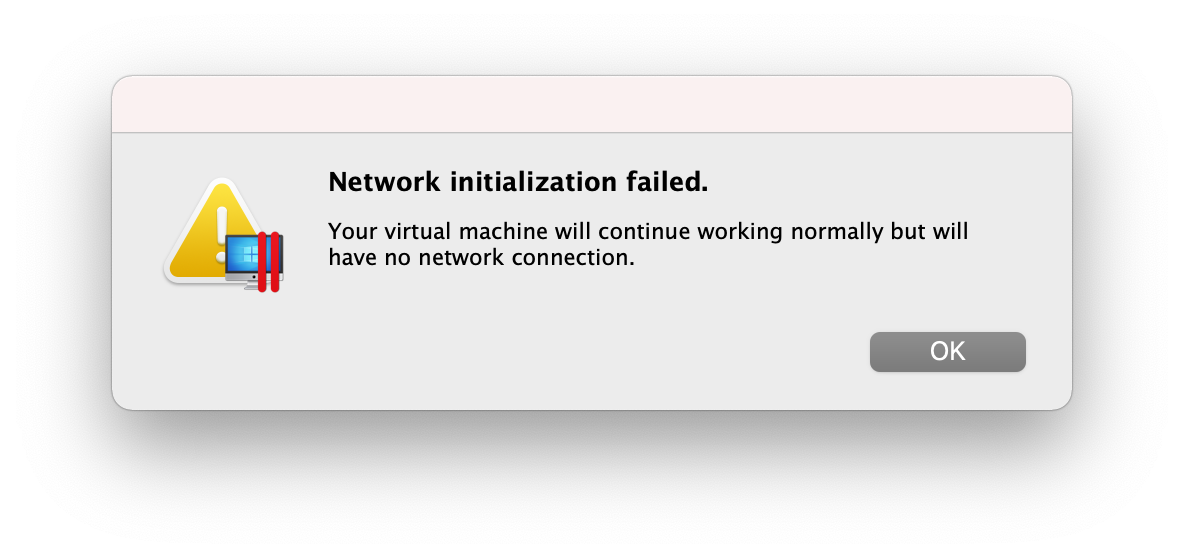
The fix
- Go to Parallel's Network preferences and click "Restore to Default". This will update the entire config file which is important and remove errant configurations.

- Quit Parallels, and open up the Activity Monitor and search for any Parallels tasks and quit them as well.
- Go to /Library/Preferences/Parallels/network.desktop.xml with a text editor like Visual Studio Code, Atom, Sublime, BBedit, Webstorm etc that's permissions aware or use the terminal if you're comfortable, and use sudo nano /Library/Preferences/Parallels/network.desktop.xml. Locate the UseKextless entry and set its value to one. Save (depending on the application you're using it'll warn you that you need to use sudo to edit the filea and bring up a dialog. If using Nano, besure to ctrl + x and when prompted, answer yes to save changes).
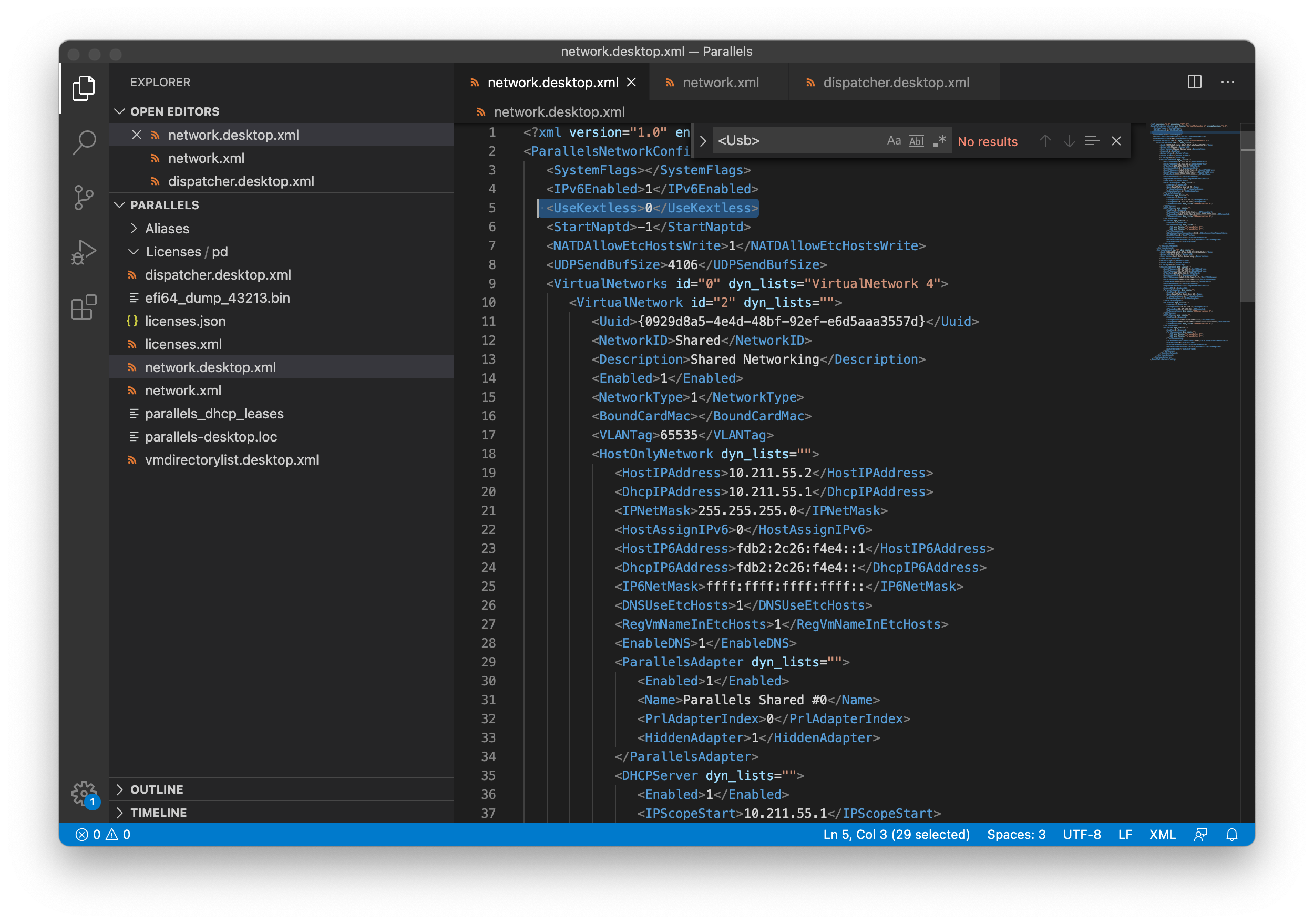
Now relaunch Parallels. The eror should go away and networking should be restored.
- Go to Parallel's Network preferences and click "Restore to Default". This will update the entire config file which is important and remove errant configurations.
-
iOSification of features for macOS
As many users saw probably this week, macOS 12 (do we really want yearly OS updates... still?) Monterey was revealed to have Several macOS Monterey Features Unavailable on Intel-Based Macs. John Gruber of daringfireball cleverly observed these features all made use of the imaging pipelines or neural engine.
The chatter in the Mac groups is nail-in-the-coffin, or debating if the features really required an M1 (Spoiler: they don't, they really don't). However, what is truly revealing is how Apple will approach future iterations of macOS akin to iOS. Generally, this has (mostly) limited to iOS camera features that are one part lens but many, many parts software. Could the iPhone XS had night mode? My guess is most likely, but Apple will not spend the energy back-porting the feature to previous hardware configurations. Then, the features are intrinsically hardware related, like the iPhone 12's signal processor, used for Dolby Vision / Smart HDR 3 / temporal noise reduction.
What seems likely is that on macOS we could see old Macs left out of newer features, but not just the latest wifi protocol or faster storage like has always happened. Still, literal features, be it improvements to real-time color correction or perhaps a hypothetical ML library that quickly identifies and highlights elements in a photo.
-
An (albeit flawed) counterpoint to the M1
PC World published Apple M1 vs. Ryzen 5000: MacBook Pro and Asus ROG Flow X13, compared article. While this is entirely leaning on the GPUs found in x86 laptops, it’s also leaning entirely leaning GPUs found in X86 laptops.
Thus far the biggest concern with my M1 is the GPU, I can edit 4k video and its fast long as I stay on the happy path, using Final Cut Pro X. It's easy to scoff at the PC World article for not including web browsing benchmarks, compile times, and other CPU bound tasks but the fact remains Apple's fight for total performance supremacy will be much tougher on the GPU front.
-
You've been programmed to believe conspiracy theories
It's been awhile since I've linked a single article, but I absolutely loved the Popular Mechanics article, "How You've Been Conditioned to Love Conspiracy Theories"
"In addition to xenophobia, O’Leary fell victim to “proportionality bias,” the logical fallacy that believes the cause of an event should feel as important as its impact. Proportionality bias lies behind many of the most popular conspiracy theories. For instance, it feels disproportionate that JFK, the so-called most powerful man in the world, could have been assassinated by one disturbed individual, or that Princess Diana,—a powerful, famous, real-world princess—was killed in a car accident."
I wish I could say I had "proportionality bias" as part of my lexicon prior to this as I certainly intuitively understood that many conspiracies are a desire to assert order in a chaotic world and an artifact of the "Tiger in the brush" scenario". It stipulates that it was evolutionarily advantageous to spot false patterns than none at all. If you believed there was a tiger in the brush, then regardless if there is actually a tiger in the brush, you'd still be rewarded with a continuous existence. Thus, evolution tolerates, if not rewards, a baseline paranoia, and overactive imagination. It's this same process that allows many to find meaning in the noise, be it the infamous Virgin Mary in peanut butter to believing that 9/11 was an inside job.
About the only thing missing is that from my (albeit somewhat limited) observations, conspiracies act as currency among the indoctrinated which is its own chaotic agent and generally any rebutal is met as further evidence of the conspiracy as it's just that much deeper. It many ways, conspiracies have filled the void as Americans become increasingly less religious although clearly no more logical.
After a year of being stuck, tethered to social media, the claws of conspirancies turn family members into born-again believers and we're all the worse for it.
-
If you're wondering what the next x86 Mac Pro specs will be...
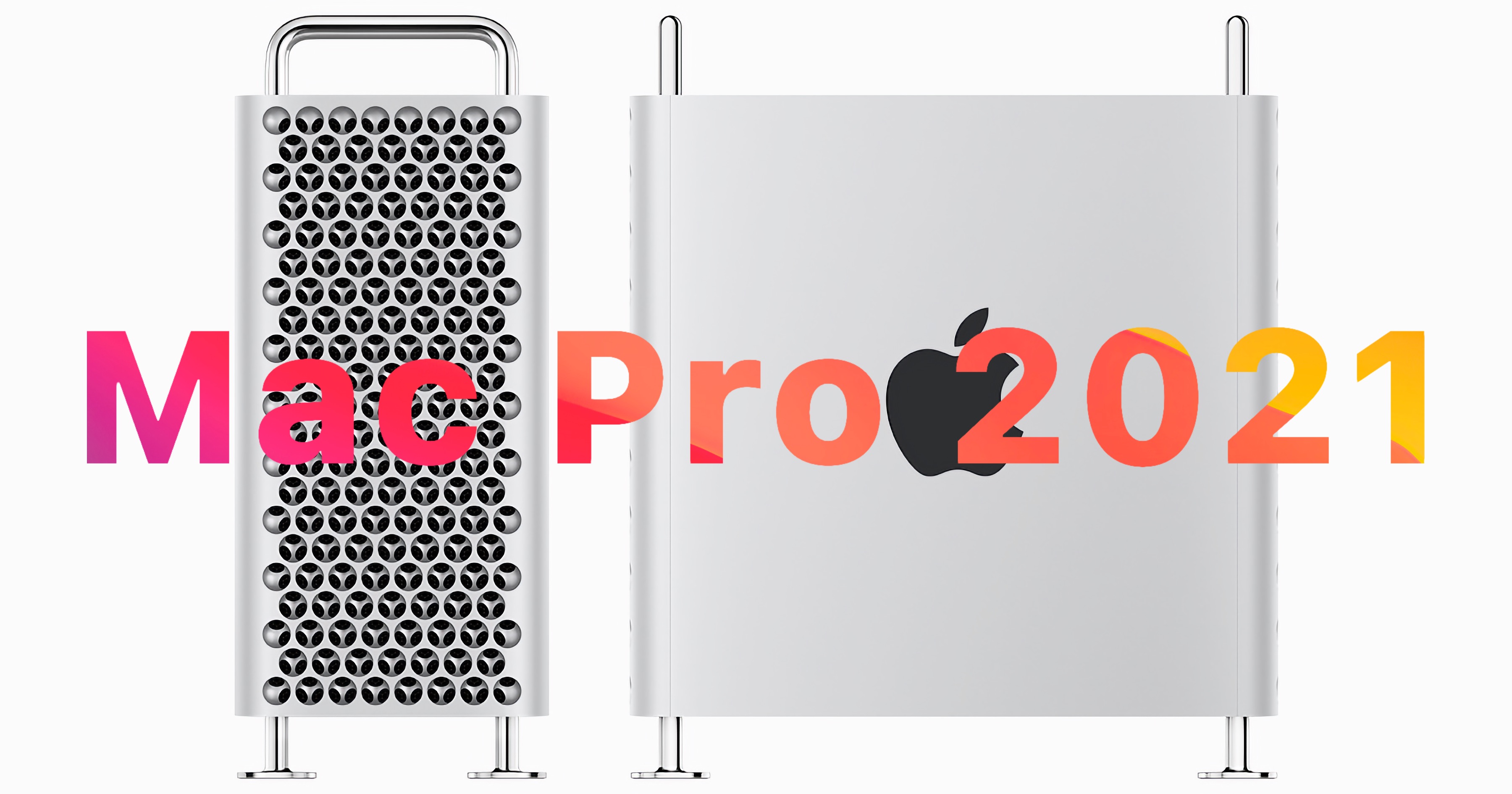
Largely ignored by the media outside of a few tech journals, the 3rd Gen Intel Xeon Scalable Processors were announced. Operating under the pretense that Bloomberg's reporting was accurate after predicting the latest Apple event, we can expect at least one more iteration of x86 Mac Pros along side Apple Silicon Mac Pros. Many Mac Pro enthusiasts lamented the Mac Pro's lack of PCIe 4.0, even if there isn't a massive point to it beyond future-proofing. There also was a bit of a disconnect. Intel has not had a PCIe 4.0 chipset until very recently, and Mac users were expecting the impossible out of Intel. GPUs simply do not benefit from PCIe 4.0 as the bandwidth requirements just do not require the increased bandwidth (AMD has shipped 8x PCIe 4.0 GPUs, which is equivalent to 16x 3.0), and there's barely a speed penalty still running the latest GPUs in PCIe 2.0. That leaves mostly SSDs as the sole component that benefits from PCIe 4.0, although I'd argue two things:
- While not ideal, ASM2428 chipsets have allowed NVMe SSDs (based on the 4x standard) more bandwidth by address more lanes. Currently, in the PCIe 2.0 realm, users can achieve 3.0 speeds using an 8x or 16x slot (as well as multiple SSDs on motherboards that do not support bifurcation). It's likely we'll see similar chipsets allowing PCIe 3.0 cards that address more PCIe lanes to attain PCIe 4.0 speeds in regards to SSDs.
- Latency and random read/write and caching mechanisms will have more perceivable benefits for daily use than increased bandwidth at this point, considering 3000 MB/s is only going to be a prohibited speed in extreme transfers.
The interesting specs
So what will the new Mac Pro specs look like?
- 10 nm, "up to 40 cores per processor" - This is using the Sunny Cove instead of the Cypress Cove variant, which is 14 nm.
- "46% more performance" - As of late, Intel has taken to dubious stats, and it is sad to see. Considering they're moving from 28 -> 40 core maximum, roughly 40% more cores, this isn't a surprising or impressive claim.
- " 8 channels of DDR4-3200" - Same as previous Xeons.
- "64 lanes of PCIe Gen4 per socket" - There's a lot of ways that PCIe lanes can be handled, but this is a beast amount of bandwidth, and with bandwidth switching certainly enough for workstations (servers are a different beast). Each CPU can negotiate a theoretical 128 GB/s of throughput via PCIe, although that might not be entirely accurate.
It's pretty easy to extrapolate that we're going to see a PCIe 4.0 Mac Pro with up to 40-Cores, roughly the same memory ballpark max-memory cap that'll still have the blistering prices we've seen before. I don't expect Apple to expend much energy redesigning the case, but we'll see the (likely) the final x86 Mac Pro setting a very high bar for Apple Silicon to follow. Still, mostly, the consensus is users want PCIe + upgradable memory and storage to continue.
-
Foolproof way to update the 2010 - 2012 Mac Pro 5,1 to the 144.0.0.0.0 firmware
Updating the firmware on a Mac Pro isn't difficult, but it is possible to "miss" firmware upgrades. This guide is for anyone looking to get to the latest (and most likely last) firmware released for the Mac Pro 5,1s, without having to install Mojave 10.14.x, or if you already have installed Mojave, or are looking to install Mojave. My first try, my firmware was stuck at 138.0.0.0.0.x even when running Mojave 10.14.6. Updating the firmware adds key funcitonality to the Mac Pro 5,1s, most notably native NVMe m.2 boot support. To learn more about Firmware and the Mac Pro 5,1s, see the Firmware Upgrades section of my Mac Pro Upgrade Guide.
These aren't the only instructions on the web, as MP5,1: What you have to do to upgrade to Mojave (BootROM upgrade instructions thread) for firmware upgrading. However, this the method I've found most reliable for users who are having firmware troubles.
Step 0: Remove unsupported GPUs
The biggest change for macOS Mojave is the deprecation of OpenGL and OpenCL. OpenGL has been a thorn in Apple's side for quite some time, as it's been nearly dead for years. Vulkan, the OpenGL successor, wasn't quite ready for primetime when Apple originally created Metal for iOS and thus decided to port it macOS. Despite the annoyingness of having to meet the requirements, it was a necessary evil. Mojave will not install if you have a non-metal supported GPU.
Note: some users are reporting they had to remove all PCIe cards sans their storage controller (SATA card) and GPU to install the firmware update. I did not. If you encounter issues, try removing additional PCIe cards.
Step 1: Have a 10.13 drive
Unfortunately, this is the biggest pain if you've already updated. You'll need a separate volume to boot into 10.13. Amazon and Newegg each have 120 GB SSDs for under $20 USD if you need a temporary drive to install macOS 10.13 on. (upside is you can buy a USB case and turn into a very fast USB 3.0 drive afterward or return it). You can get old versions of macOS via the Mac using DosDude1's installer if you can't access it. If you have no intention to upgrade to Mojave or already have it installed., don't worry. We won't be installing Mojave.
Step 2: Boot 10.13
The next step is pretty straight forward, boot into your install of macOS 10.13 if you haven't already.
Step 3: Download 10.14.6 Combined installer
Fortunately, firmware flashing does not require updating in a particular order. I went from 138.0.0.0.0 to 144.0.0.0.0 without any problems. There's several avenues for this, including the Mac App store, but when I used the Mac App Store route, I didn't get the combined OS installer (The Mojave installer + all the updates to Mojave). The easiest way to obtain the final combined update for Mojave is to use Dosdude1's installer. Much like before, download the OS DosDude1's installer, even though we have supported hardware but with the patcher for 10.14.
Clarification: You do not need to use the DosDude1 installer, as you can grab the update via the App store or other sources but I found this easier. Apparently this link was posted this on MacRumors and a few posters didn't read the full instructions and suggested that I was advocating using DOSdude1 on the OS. I am not. The Mac Pro 4,1/5.1 does not need DOSDude1, so do not run the patcher on Mojave. The Patcher just happens to be extremely reliable about fetching the correct version, and skips the hassle of the App Store.
- Go to DOSdude1 Mojave patcher and download it
-
Launch the patcher.

Depending on your security settings, your mac may suggest it's from an unverified developer. Go to the system prefs, Security and Privacy (general), and allow the app to open.
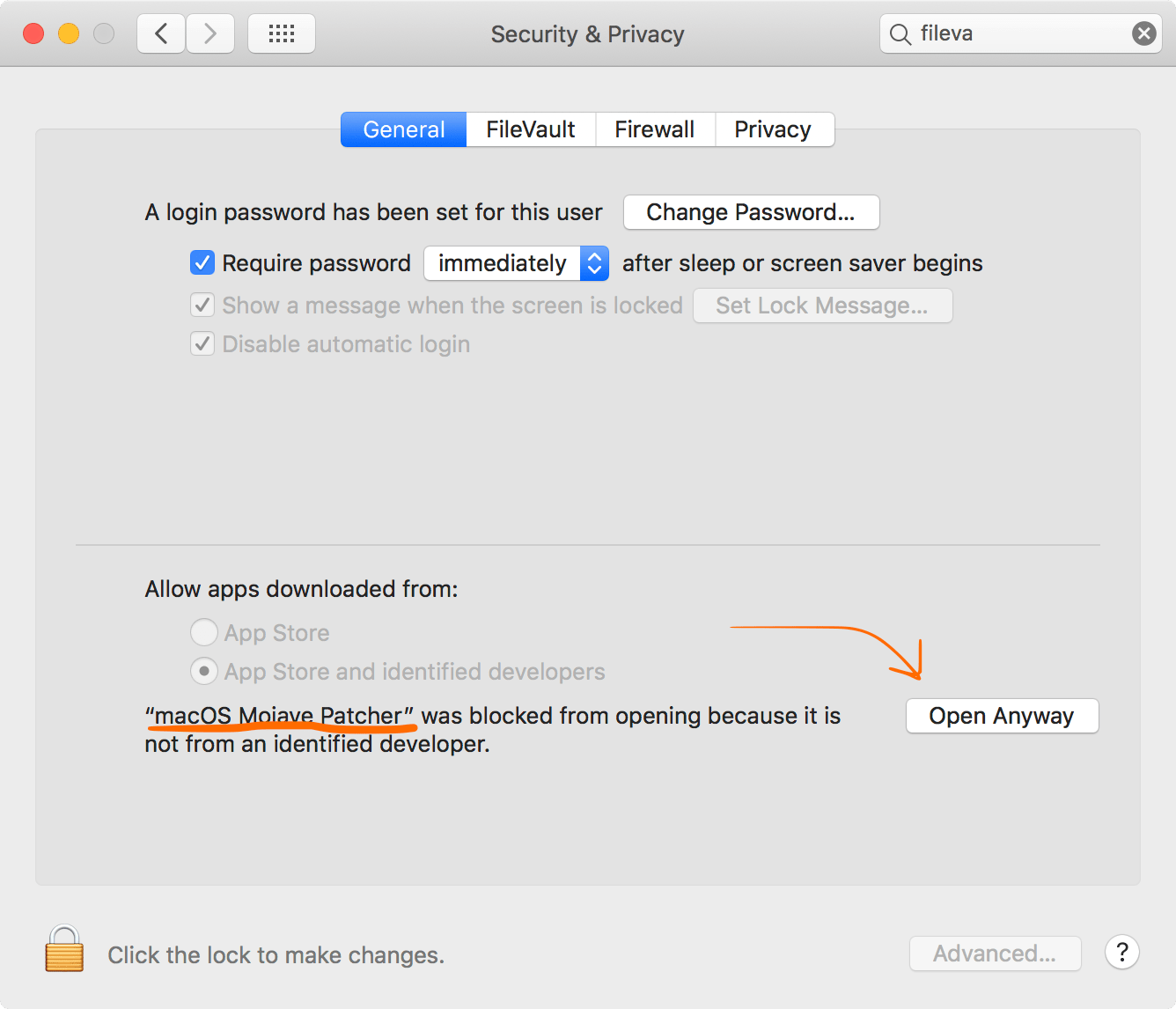
You'll be bugged one last time.
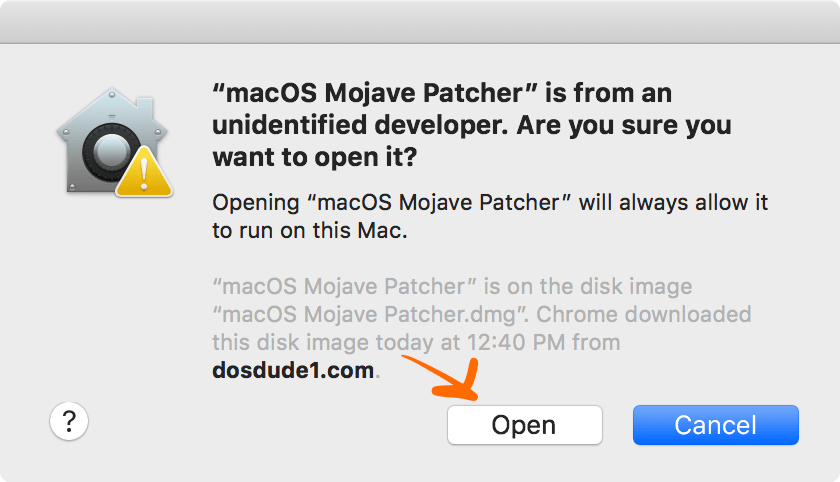
The patcher should warn you that you are on supported hardware.
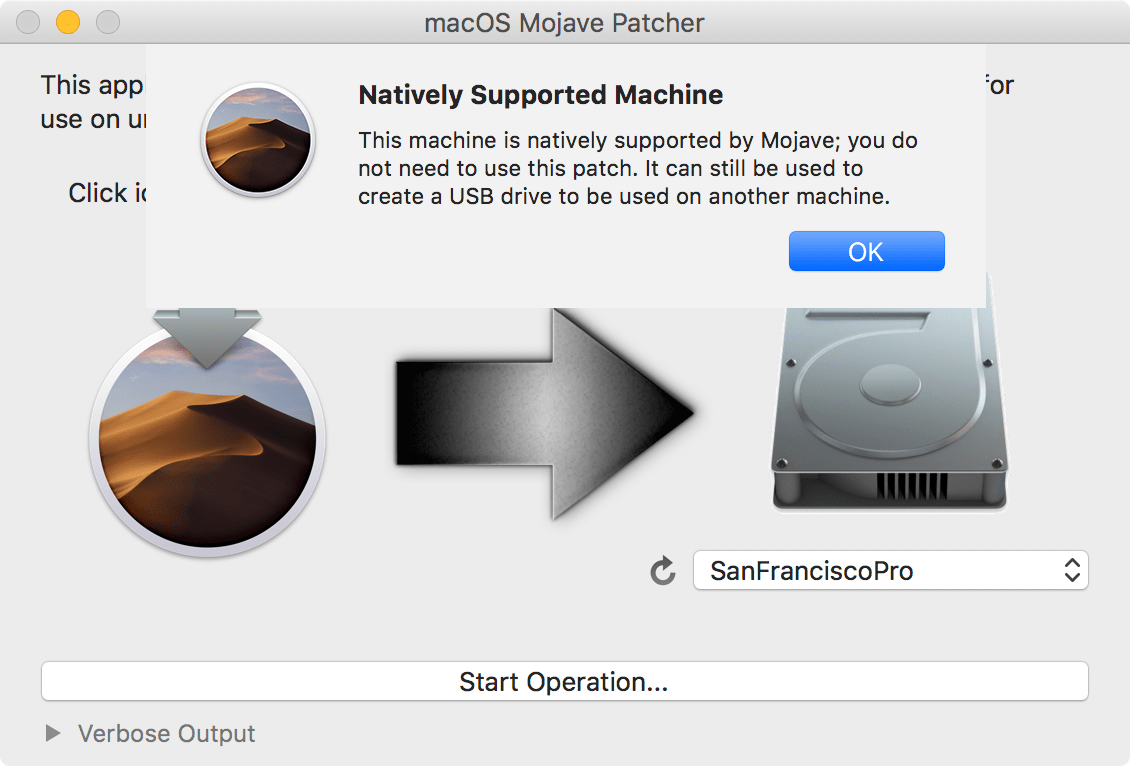
This is fine, ignore the message. Within the patcher, select the download Mojave from the Tools menu.

- Once the download has completed, quit DOSdude1's patcher.
Step 4: Launch the installer and click shut down
The installer should bring up a message about firmware and a shutdown message. This will not start the Mojave installer, only the firmware.
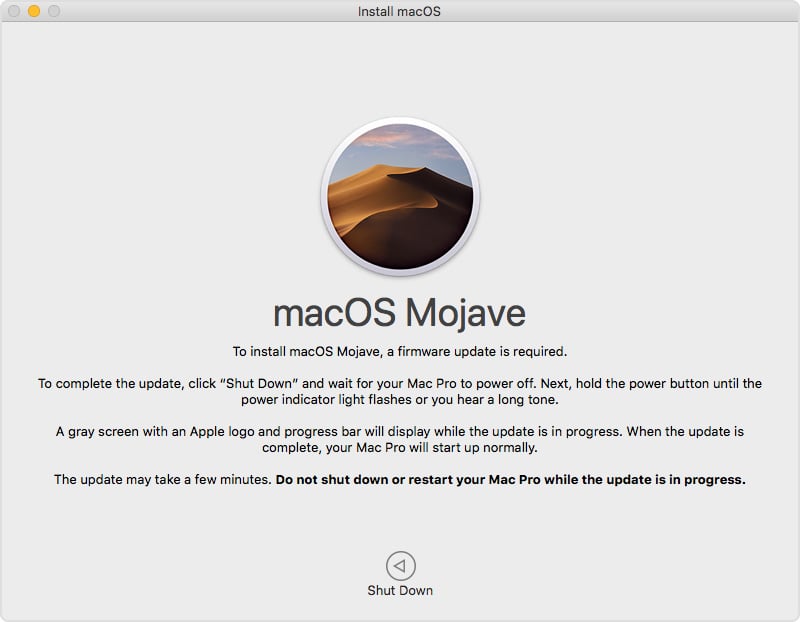
Step 5: Boot the Mac
Using the instructions in the previous image, press and hold the button until it blinks. If you do not have an EFI enabled GPU (see more about EFI in my Mac Pro Upgrade guide), you will not see any video output.
I trimmed down the video, as it took about 15 seconds of holding before the button flashed. After the button flashed, the internal speaker emmitted a long lowfi "boop" sound.
Step 5: Verify
Go to About this Mac, and click system report. Under the first screen, look for the "Boot Rom" text. This should list your firmware version. From here, you can continue using 10.13.6, upgrade, or boot to your 10.14 volume.
The 144.0.0.0.0 firmware works with any version of macOS your Mac Pro supports.
Updated: November 13th, 2019 MacRumors feedback
Updated: November 4th, 2019 based on Feedback from Mac Pro Users user group on Facebook.
-
AmorphousDiskMark is CrystalDiskMark for macOS; lets all stop using BlackMagic Disk Speed Test and AJA Disk Test
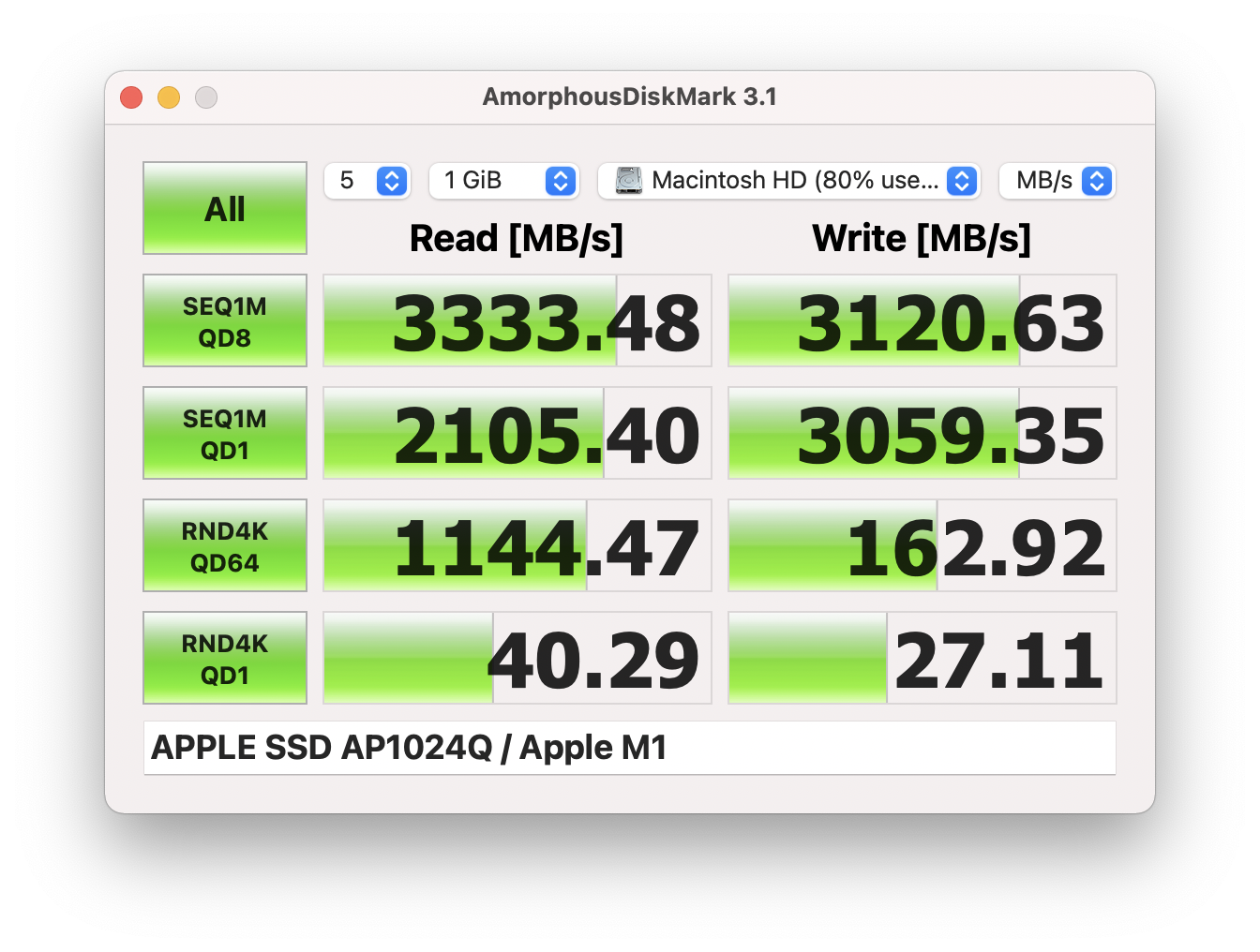
Benchmarking a MacBook Air M1's SSD.
Awhile back, I made a video about USBc and the classic Mac Pro but lamented yet ago the terrible benchmarking on macOS. The first commenter on FaceBook pointed out that we finally have a good disk benchmark utility AmorphousDiskMark. While it isn't a direct port, it's heavily inspired by the famed and loved Windows utility, CrystalDiskMark.
So why am I always complaining about BlackMagic Disk Speed Test
BlackMagic's Disk Speed Test only tests one thing, continuous throughput. This is useful but only measures one aspect of an SSD, and doesn't necessarily mimic accurately how most disk interactions occur. Random Read and Write tests are as important, if not more so, as many SSDs can deliver fast maximum continuous read and writes but much less so for random small data blocks. CrystalDiskMark tests random reads and writes both as queued requests and single requests. The default depth is pretty high for the test. Usually, an OS wouldn't have that deep of a queue, but the Q1T1 does mimic a singular request. Also, CrystalDiskMark measures IOPS (Input/Output Operations-per-second), which is similar but also a different measure of disk speed.
Better but not perfect
There's plenty of aspects that aren't covered, such as latency, burst performance, power consumed, and mixed random read/writes, but this is a massive step in the right direction for gauging SSD performance on macOS. Oh yeah, and it's free.
Let's retire BlackMagic's Disk Mark and embrance Amorphous Disk.
-
Gulp 4.x and .Kit work flow
Codekit has its own very simple templating language, .kit that's actually quite useful when you're not looking to spin up something like PHP or Python or in the Pug/Jade vain (which latter two I've never been able to commit to). The documentation is straightforward. You can find it here but passing off a project with CodeKit dependency probably isn't viable for many situations. Also, Gulp 4.0 is much easier to read and much more pleasant to work with. You'll need, of course, a current-ish version of Node to run this.
Rather than post a git repository, I've created a GitHub Gist for anyone looking to make .kit files work with Gulp. It features a really basic simple set for compiling .kit, Sass, JS and uses BrowserSync for both streaming CSS changes and live reloads after JS/Kit changes. The readme has the default directory structure. All the files land, and in a /dist directory, that's likely something you'd ignore in your .gitignore.
The Tasks
gulp- runs all the compiling processes oncegulp watch- launches browsersync server with live compiling/processing
Apologies to anyone using RSS as the embed won't work, but you can view the gist on github.
-
Oculus Quest 2 vs classic Mac Pro 5,1 (2010/2012)
The Mac Pro 5,1, despite its age, still can run many modern GPUs, so it shouldn't be a big surprise that the Mac Pro can use VR headsets for gaming (under Windows 10). The Oculus Quest 2 is probably the most attractive option as it's inexpensive at $300, includes VR controllers, now supports higher refresh rates/hand controls, and functions as a stand-alone game console. There are a few considerations that you need to be aware of.
- Windows 10
- Oculus Link Software
- Steam VR
- SteamVR Performance Test: Before taking the plunge, you can test your computer to see if it is VR capable in Windows using the free SteamVR Performance test software.
- USB 3.0 card that provides enough bandwidth: Cards with one controller for four ports may not provide enough bandwidth. The Oculus Link software will continue to work (with warnings), but you will experience blurred visuals due to higher video compression
- Proper USBc Cable: This might seem trivial, but USBc cables are not created equally. Many USBc cables use the charging spec but run at USB 2.0 speeds. Finding the correct cable is a huge issue. Oculus recommends its own $80 cable or the Anker Powerline+ USB C to USB 3.0 Cable.
- Active USB extension cable: Longer cables experience signal degradation over long distances. Active USB cables draw power from the USB bus to amplify the signal so data rates can be maintained. I personally used the CableCreation Active USB Extension Cable, but there are other options.
- GPU: Higher-end = better. I have a Radeon VII, but the Radeon 5700 XT is an equally viable option. The Vega 56/64/FE are also decent. Some people have posted usable results with the RX 580. If/When macOS is updated to support later model AMD GPUs, those will be the preferred option
Personal Thoughts
Tethered VR feels like a big step back from untethered, and regardless, VR still feels like it's in its infancy/gimmicky. This is partly because of the low resolution, and I imagine even when we get to 120 Hz and 8k per eye, it'll still feel low resolution. The Quest 2 works pretty well and is easy enough to set up, but with the space considerations, cost, and limited titles, it's hardly a must-have. I tried Skyrim VR, and I have to say, I found it nauseating trying to navigate the world to really bother trying to play it at length. The nausea effect differs person-to-person, and I seem to experience it worse than the average person. Games that do no feature 1:1 real-world movement are almost a no-go.
One of the most exciting features of VR is the ability to exercise while gaming. Boxing games are a huge workout. I found myself hitting 170 BPM while dancing around and swinging wild haymakers. When VR gets better, I can easily imagine many VR gamers being relatively fit.
-
Apple 2020 Report card
Every year Jason Snell puts together a round table of opinions from Mac pundits called the Apple Report Card. I particularly look forward to it as I inevitably play the game "How would I score it?" I probably should never be asked by anyone as a panelist for something like this as I'm much too dower.
`Mac: 3.5
The M1 is wildly exciting. I've written about it as I'm an early adopter, but there are some curious limitations that aren't appropriate for many mid-tier users, 16 GB of RAM, lack of eGPU support, or more than two displays. These are all things certainly to be addressed (except maybe eGPUs), but it does look like the death of user serviceability. The iMac will be the big canary in the coal mine for the Mac's future.
A computer is nothing without its OS, and Big Sur wasn't nearly as bad as Catalina, but I'd rather see a focus on "when it's done" than yearly OS releases.
The rumors for the Mac laptops sound amazing. No longer feeling the holy crusade against ports or thinness at the expense of everything else gave us in 2019 both the Mac Pro 2019 (even if its absurd) and the MacBook Pro 15 inch 2019. With Magsafe and SD card slots, rumored the Mac laptop will be at a new all-time high, besting the 2015 MacBook Pro as the best design/feature set. If I can get a 13 inch Mac Pro with 4 USBc ports, SD card slot, one more external display, MagSafe and more RAM in 2021, I'm selling off my m1 Air and dropping serious coin as this has been my dream and may finally be the first time a laptop as my primary computer in my entire life. That said, this in the future and not today and while the Apple Silicon Macs are very impressive, its not enough to ballast the software shortcomings. Also, for the millions of Intel Mac owners, I worry about long tail support.
Desktops? Much less so. Apple's GPU performance is scattershot, and a desktop without the ability to upgrade its RAM or GPU sounds horrible.
Phone: 3.75
The return to hard edges is wonderful, but Apple doesn't offer a pro mini, so yet again, I ended up with a larger phone that I want. As someone who lives an active life, I'd value some even easier to tuck away, but I also want the latest and greatest. There seems to be no compromise. I still miss the headphone jack, and I worry Apple will go portless to no-one's benefit. I have accessories that rely on the iPhone 12 beyond just charging, data, and audio, such as the Shure MV88.
Also, my iPhone XS had syncing issues with iOS14, which never were resolved no matter what I tried until I received iPhone 12. My mom had the same exact issue. The Apple support pages are flooded with people with this issue. If you're not on the receiving end of this, I'm sure you'd score it higher, but it is pretty frustrating that I was hit with some wacky battery issues and syncing in 2020.
The lightning port needs to go. It's a USBc world now. The lightning port is one Apple standard that I begrudgingly admit was a good idea for its time as it was a much more pleasant experience than mini/micro USB. Now we have USBc. The lightning cable standard should have died two years ago.
It still feels utterly suicidal to go caseless on an iPhone. I rolled caseless on the iPhone 4 and 5 without breaking my phone. The iPhone 6 was a different story. While I didn't expect to feel the speed bump from my XS, I did but I'd of traded it for longer battery life and durability.
In what's bound to be my most controversial take, iOS 14 beyond its privacy features, did not impress me. iOS 14 is still a mess. App organization is still the most tedious experience on mobile. The dashboards feel more gimmicky than useful. I relegated the few I like to the feed instead of anywhere on my screen.
iPad: 3.5?
It is kinda a stagnate year for the iPad, although I still wonder if the iPad Pro will be able to run macOS or a modified version of it when using a keyboard mouse combo.
I'm not a tablet person as it's too compromised, and the iPad Pro struggles to really be a pro device outside of its beautiful drawing capabilities. I constantly wonder "Who wants to make these sort of compromises?" Perhaps someone who's life is majority writing but creative professionals to developers, the iPad is a dead end still.
Apple also still has the bizarreness of a device that offers one set on Lightning port (kill already) and USBc (embrace it).
Despite my naysaying, the iPad still remains the best tablet by miles, and I wouldn't lie if I didn't want one for sidecar so I could draw. When I had an iPad 2 I found that I really didn't ever do anything beyond consumption and simplistic games and to this day, it still seems best suited for this. The limitations found on the iPhone are tolerable due to the contraints but nearing a laptop's size, the iPad still feels like a "big iPhone". There's certainly appeal in that but the iPad Pro feels more like a high end consumer device than anything professional beyond its beautiful pencil. Plenty of people love this product, and I do not. Perhaps we'll see the convergence of iPad OS with macOS with the ability to launch macOS apps on the Pro.
Wearables: 3
Watch: 4, Headphones: 1.5I still hate that Apple has a virtual monopoly on its headphones by locking out other headphones makes from reading text messages and not licensing its pairing chipsets. The Airpods remain one of the most mediocre sounding headphones on the market. I have a pair of the PowerBeats, which I use a lot more out of convenience than actually loving the product. Killing the headphone port meant switching to a lesser bluetooth experience and Apple knew it and thus served up a way to de-suckify Bluetooth without letting anyone else have it. If I sound jaded, I most certainly am as its the Apple tax at its worst as Apple actively blocks people from having a superior experience. I bought a pair fo the AirPods Pro and returned them as they sounded worse than the Powerbeats, and worst than my JVC Marshmellows. I was stunned as I figured I'd be buying into moderately better audio quality. As product, they're exceptionally well designed. As headphones they're bad. The Airpods Pro are only incredible if you're willing to ignore that if on a level playing field, the Airpods would be just "eh".
The Airpods Max is the product that'll certainly have its proponents, and the wireless over-the-ear noise canceling bluetoth market is filled with mediocrity. I've tried and returned Momentum 3s and Sony WH-1000XM4. Thus far I've yet to find over-the-ear headphones that justify the money. For them to be called the best sounding wireless noise-canceling headphones, is a low bar to clear as wired, non-noise canceling headphones will best them at 1/5th the price of the Airpod Max. Apple likely has the best pair, but the price is absurd for the quality as it suggests to an audio connoisseur such as myself the truly high end, but it's clearly not. Then the case? Oy, bafflingly bad, and top it off, heavy and not IPX rated for working out. These are office headphones in a world without offices. If this had been priced even at $400 or truly matched their price class at least with less expensive headphones in the wired world perhaps I wouldn't be as bitter if Apple allowed others to its proprietary pairing. These very much feel like a product waiting for a revision.
The Apple Watch is in a class of its own. As a personal health device, it's unmatched. The blood oxygen sensor isn't medically accurate which makes it more novelty than anything else. It's kept me active during covid, with my 820 calorie a day goal. I also pretty much use my watch minimally outside of exercise or while driving but I still love it even if I use only about 3-4 apps on it. I'd be inclined to give the Watch a 4.5 if it weren't for the syncing issues that plagued it.
The embargo of custom watch faces remains one of the pain points. The iPhone received (mediocre) customization, so why not the Watch? The number of analog watch faces flummoxes me as it feels silly to me on a digital face. Custom faces would be nice for me.
Apple TV: 0.5
Overpriced. Bad Remote. No updates in 3+ years. Yeah, there's the Apple Health app, but that is a tough pill to swallow. I haven't owned an Apple TV since the Apple TV 2, so I can't comment on the OS improvements or lack there of. The remote is still trash. If Apple wants to convince anyone its serious about gaming on the Apple TV, then it should come with a remote.
Services: 4
iCloud is pretty good. I mean really, it is. Apple News more expensive than it needs to be, Apple Arcade turned out to be just ok. Apple TV had a few pretty good TV shows that I enjoyed at no cost with my new iPhone. I really want though Apple to encrypt my iCloud backups.
Apple News' design is still pretty bad but the rest of it is fine to good.
Hardware Reliability: 3.5
Now that we're past the butterfly keyboard, the self-inflicted wounds are over. The iPhones still feel built to break, which is funny as the Apple Watch does not.
I saw plenty of issues in the wild this year, like display issues, but the MacBook Air M1 feels like a mature product despite being a first-gen product.
Software Quality: 3
I'm at the avant-garde, so I tend to find the hard edges being someone who is web developer/UX engineer, which means a large toolset that spans everything: development tools (Docker, Webstorm, VScode, Xcode, Android Studio, Homebrew, Node, Ruby, Git, React, Webpack, Gulp), Visual Design (Sketch, Pixelmator Pro, Photoshop, Adobe XD, Figma, Axure, Illustrator), Video (Final Cut Pro, Premiere Pro, Motion, Compressor, After Effects), Audio (Cubase, Ableton, Logic, too many plugins).
Catalina was utter chaos. Big Sur is much better, although prone to nebulous errors when trying to install or run certain applications like the infuriating "app doesn't have permissions," which requires, at best, chmodding or, worse, self-signing code. I can generally navigate these issues, but I also operate outside of most people, and to require my skillset to just get things to go seems absurd.
As locked down as Catalina was and tossing out legacy like it was going out of style, Big Sur seems content with the field burning and doesn't require much more land. I have many thoughts on Apple's out with the old as Windows 10 can still run on 2006 Mac Pros and run applications written for Windows 98.
Big Sur has been hell to pay as Serato still doesn't have a solution for Big Sur. Adobe doesn't really have workable solutions still for some of its Apps on the M1. Apple seems contented to punch developers of both macOS and iOS in the face repeatedly.
Big Sur works extremely well on M1s and is a mild improvement over Catalina, which is all kinds of impressive.
iOS14 was moving in the right direction but still doesn't address how terrible app organization is on iOS or how bad folders are.
That said, the meaningful updates to Logic Pro and a lesser extent, Final Cut Pro were very welcome. Logic represents the best deal in music production, hands down. It can score a blockbuster movie or record, mix and master an album, and is now encroaching on Ableton. Final Cut Pro X still isn't for Hollywood and has some annoying features like the librarying as opposed to per-project assets, but it's a pleasure to use. Motion needs more TLC as essentially, and it's the same app it was eight years ago. Motion is very good but desperately needs more. Also, the educational bundle at $199 for FCPX, Logic, Motion, Compressor, and MainStage is the best deal in software today.
I still wish Apple would reboot Aperture with tight integration with Photos or at least make a "Photos Pro" app.
Developer Relations: 2
Xcode is still a monstrosity. They gave devs a break for the first $1,000,000 for 15%, which is wonderful. Wildly changing the OS to break app support is frustrating just from the perspective of a user.
Social/Societal Impact: 3Pledging money to help fight racism was nice, and while problematic for free speech, de-platforming Parler was another win for common decency.
Trying to force App transparency for privacy and also causing the cold war with FaceBook to become hot suggests Apple is on the correct side of history. Without Apple, who would champion privacy in the SV? It seems like no one else.
Still, iCloud isn't encrypted, and developer relations aren't great, which mars a solid year with Apple dancing the 2020 shuffle without blundering hard, and Tim Cook was out in front to talk race (even if stifled) in a way none of the other big tech firms were willing to do. It's not perfect, but engagement counts for something in a year where the fabric of reality has been politicized.
Closing:
Apple's software the weakest link for Apple, and the feeling of macOS as a walled garden still persists even if it's more the hardware. After years of Windows playing catch up and offering better performance and longer tail support, its nice to see Apple toss out a beautiful transition to M1, but it also leaves a lot of asterisks around the legacy hardware and upgradability. It feels like the iOSfication of the hardware across the board. What was once only acceptable for MacBook Air is now standard for all Macs.
2021 is going to be one hell of a year for the Mac. The renewed focus on the Mac makes me happy as my professional and creative expression is entirely tied OS X's legacy as the mix of power and the polish of ease of use. I buy Apple computers for macOS entirely.
-
Running Mac OS 9 and Mac OS X 10.0 - 10.4 on Apple Silicon (M1) & Intel via QEMU
The info this guide is valid but I written a new one about QEMU screamer which emulates Mac OS 9 - OS X 10.14 with sound.
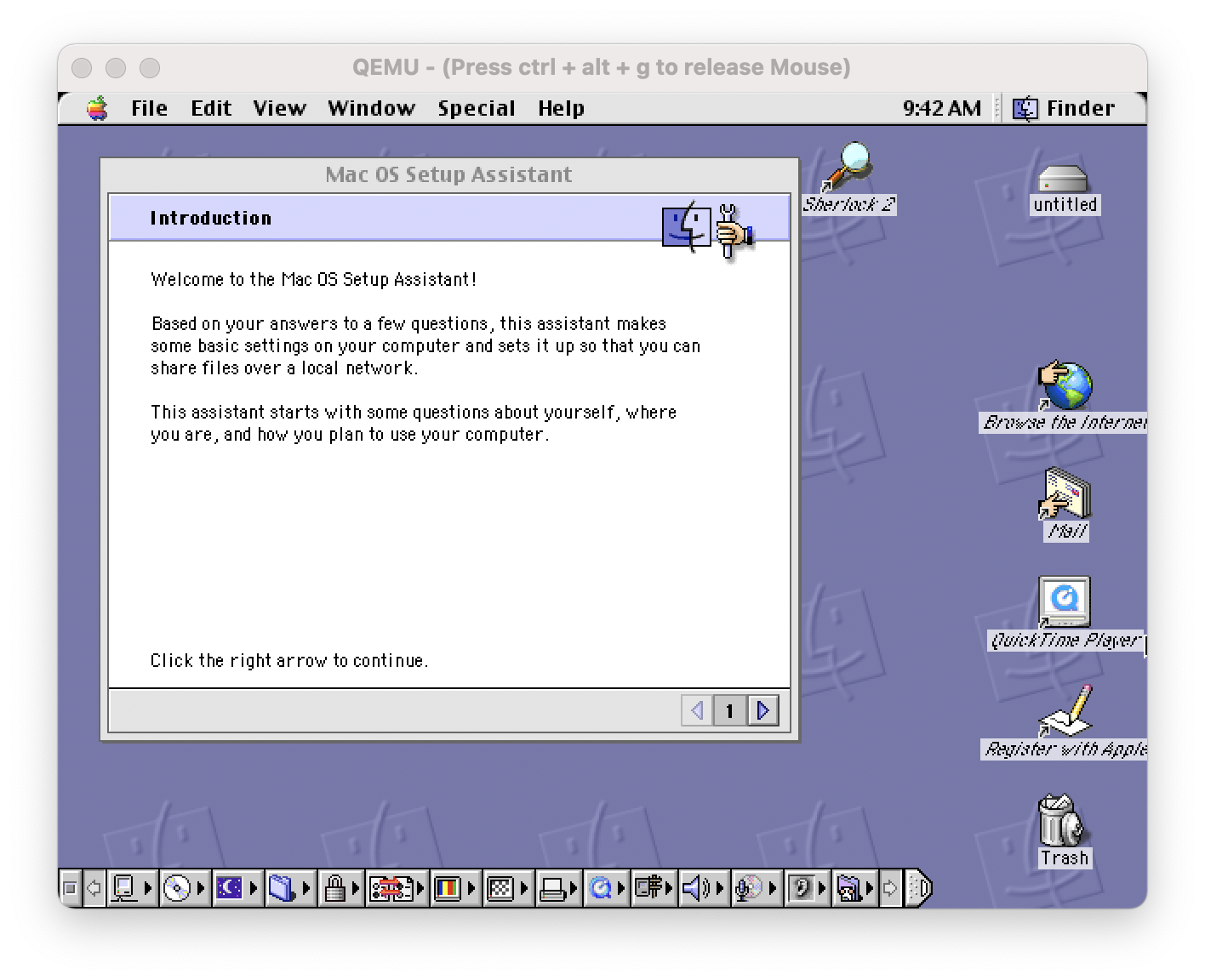
QEMU is an open-source emulator for virtualizing computers. Unlike VMWare, it's able to both virtualize CPUs and emulate various CPU instruction sets. It's pretty powerful, free, and has a macOS port. There are alternate versions and different ways to install it. Still, in this example, I'm using Homebrew, a package manager for macOS/OSX that allows you to install software via the CLI and manage easily.
Now, this post wouldn't be very exciting if I tried this on my Mac Pro, but I decided to try it on my MacBook M1. Thus far, the community has succeeded in getting QEMU to install the ARM version Windows, so I decided to do the more silly path and get PPC and X86 working on Apple Silicon. I encountered very little resistance, which surprised me as I haven't seen/read anyone trying this route. It's surprsingly very usable but the usefulness is going to be limited. I was able to play Sim City 2000 on Mac OS 9.2 at a fairly high resolution. For the sake of brevity, I'm going to skip over installing Homebrew on an Apple M1, but you'll want to use the arch -x86_64 method, which requires prepending. I've gotten OS 10.0 and nearly gotten Windows 10 working on my M1.
12/19/21 Update
When I originally wrote this guide, there wasn't a native version of QEMU for Apple Silicon, I've updated this guide so it is now correct
Included below is the instruction for both Apple Silicon and Intel Macs.
Requirements
- Basic understanding of the terminal in OS X/macOS
- Apple Silicon (M1) computer (or Intel) Mac
- Xcode
- xcode-select (CLI Tools)
xcode-select --install - Homebrew
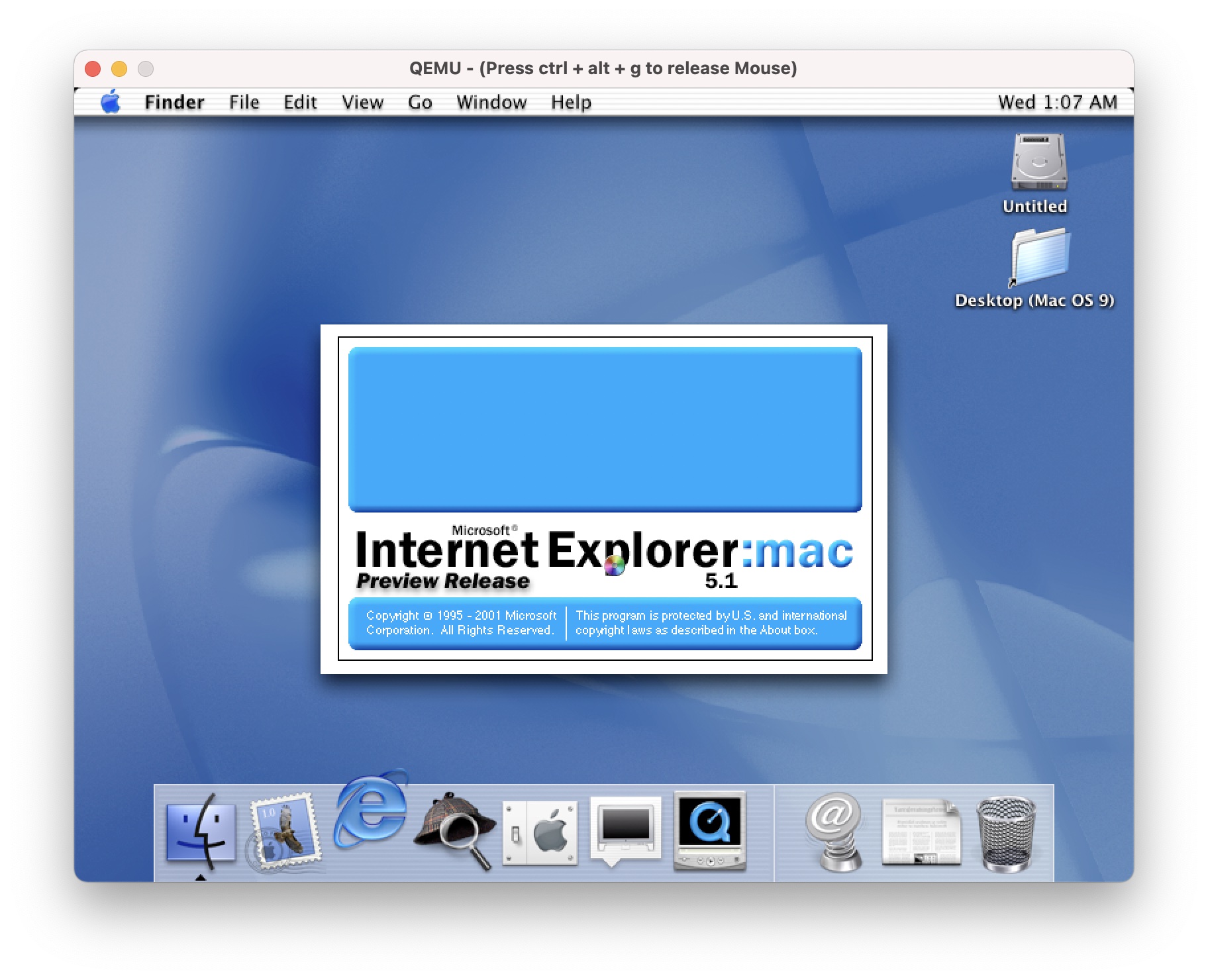
Step 1: Install QEMU
Now that there's a universal binary for QEMU for x86 and Apple Silicon, we can install it using the same commands on both architectures. Yay!
brew install qemuStep 2: Create a disk image
You can specify a path in fron to fthe image, but I just used the default pathing. The size is 2G which equals 2 GB. You can get away with much less for OS X OS 9. If you'd like more space, change the size of the simulated HDD.
qemu-img create -f qcow2 myimage.img 2GStep 3: Launching the emulated computer and the tricky part: Formatting the HDD
Now that we have a blank hard disk image, we're ready to go.
qemu-system-ppc -L pc-bios -boot d -M mac99 -m 512 -hda myimage.img -cdrom path/to/disk/imageLet's break this down so it's not just magic. The first command is the qemu core emulator, you can use things like 64-bit x86 CPU
qemu-system-x86_64or a 32-bit CPUqemu-system-i386, but we're using a PPC, so we are usingqemu-system-ppc.Next, we're declaring PC bios with
-L pc-bios, I'm unsure if this is necessary. This seems to be the default even in Mac QEMU. After that, the-bootflag declares the boot drive. For those who remember the days of yore, C is the default drive for PCs, D is the default for the CD-Rom like a PC. It's weird, I know.-Mis the model flag. It's pretty esoteric, but QEMU uses OpenBIOS, and mac99 is the model for Beige G3s. The lowercase-mis memory, expressed in megabytes, but you can use 1G or 2G for 1 or 2 gigabytes like the format utility.-hdais the image we're using. Finally,-cdromis the installer imageStep 3.5: Special considerations between operating systems
I discovered that OS X 10.0's installer has a significant flaw: It doesn't have a disk utility. The disk images are black disks thus have no file system. If you want to run OS X 10.0, you'll need to first launch an installer that can format HFS like OS 9 or later versions of OS X, run the disk utility, format the image and then exit out of the emulator. The process would look like this:
qemu-system-ppc -L pc-bios -boot d -M mac99 -m 512 -hda myimage.img -cdrom path/to/disk/macosx10.1 or macOS9Then format the drive from the utility, quit the emulator (control-c on the terminal window).
qemu-system-ppc -L pc-bios -boot d -M mac99 -m 512 -hda myimage.img -cdrom path/to/disk/macosx10.0Tiger and Leopard requires USB emulation so you'll need to add
-deviceflags for a usb keyboard and a usb mouse, also both like a few extra -prom-env flags.qemu-system-ppc -L pc-bios -boot d -M mac99 -cpu G4 -m 512 -hda myimage -cdrom /path/to/disk -device usb-kbd -device usb-mouse -prom-env 'auto-boot?=true' -no-reboot -prom-env 'vga-ndrv?=true' -prom-env 'boot-args=-v'Power PC Leopard I can get to boot but it crashed twice during installs, this could be
Step 4: after the installer fininshes
You will end up seeing a failed boot screen after the installer finishes. This is normal. Either quit the QEMU instance or use control-c in the terminal to close it. Now that it's installed, we want to boot off the internal drive.
qemu-system-ppc -L pc-bios -boot c -M mac99 -m 512 -hda myimage.imgMacOS 9 seems to do slightly better when adding the via=pmu and specifying the graphics.
qemu-system-ppc -L pc-bios -boot c -M mac99,via=pmu -g 1024x768x32 -m 512 -hda os9.imgStep 5: mounting disk images
There's not a lot to do with an OS without software. You can mount plenty of disk image formats
qemu-system-ppc -L pc-bios -boot c -M mac99 -m 512 -hda myimage.img -cdrom path/to/disk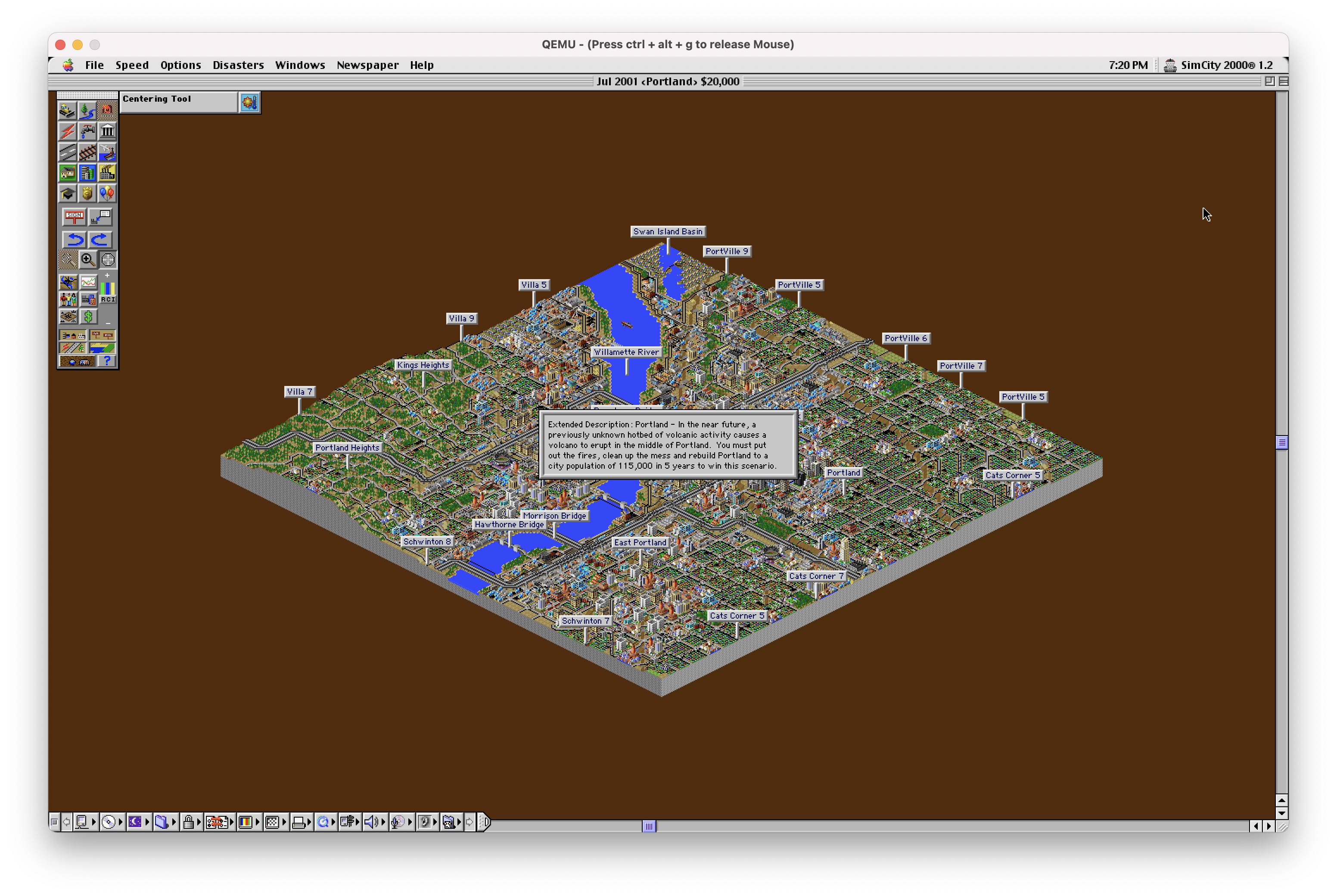
Bonus round: Trying for x86 64 Windows 10
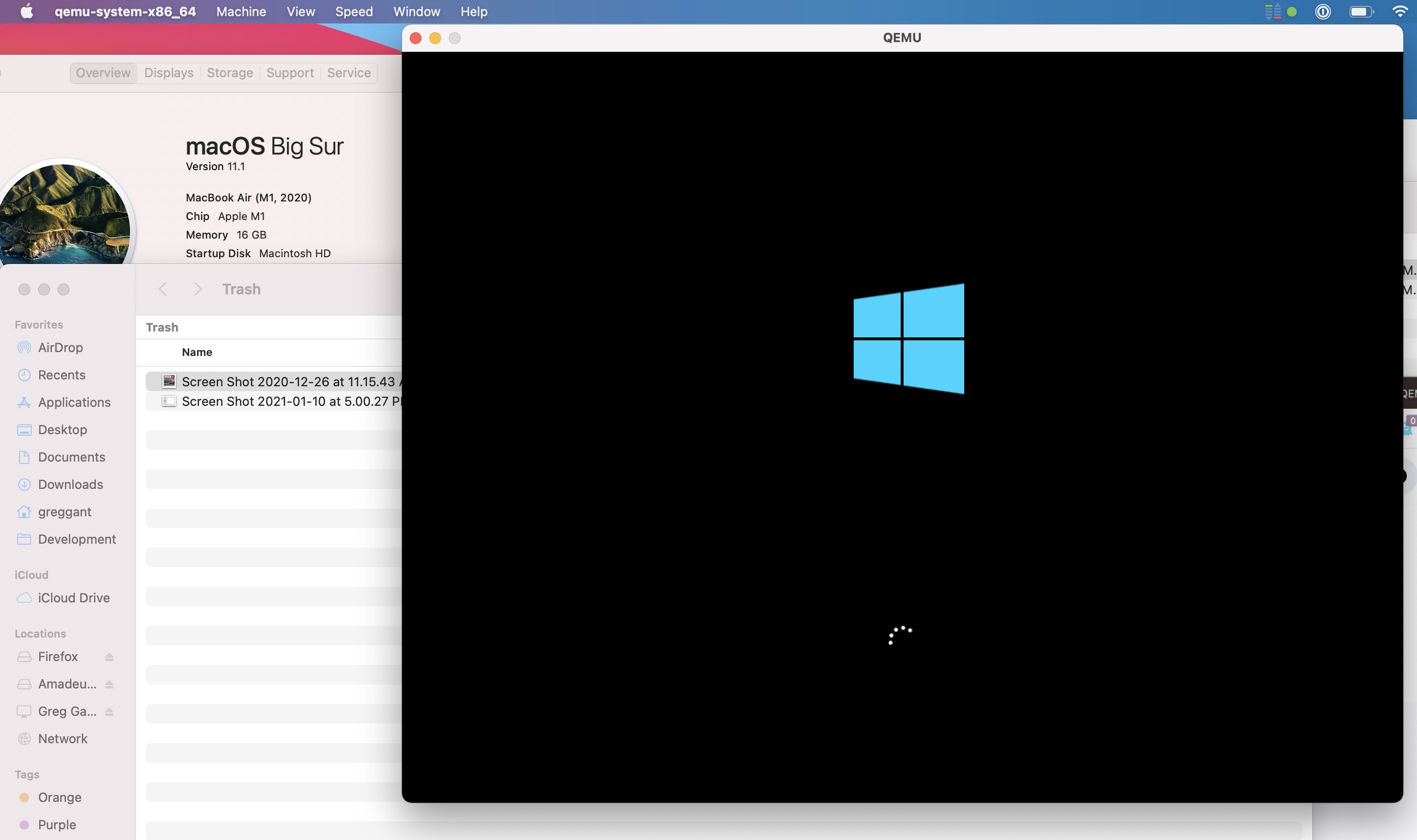
Step 6: Multi CD-Rom Installs or swapping Disk Images
Older applications and OS installers require mutliple disk images. This can be done from via the CLI inside QEMU.
On the QEMU window press:
- Control-Alt-2 to bring up the console
change ide1-cd0 /path/to/image- Control-Alt-1 to bring back the GUI
Thus far my Windows 10 experiment has been a lot less successful, I've gotten through the installer (it's unbearably slow) but it seems to hand on booting. It looks very feasible. I might have better luck using the 32 bit verison of windows.
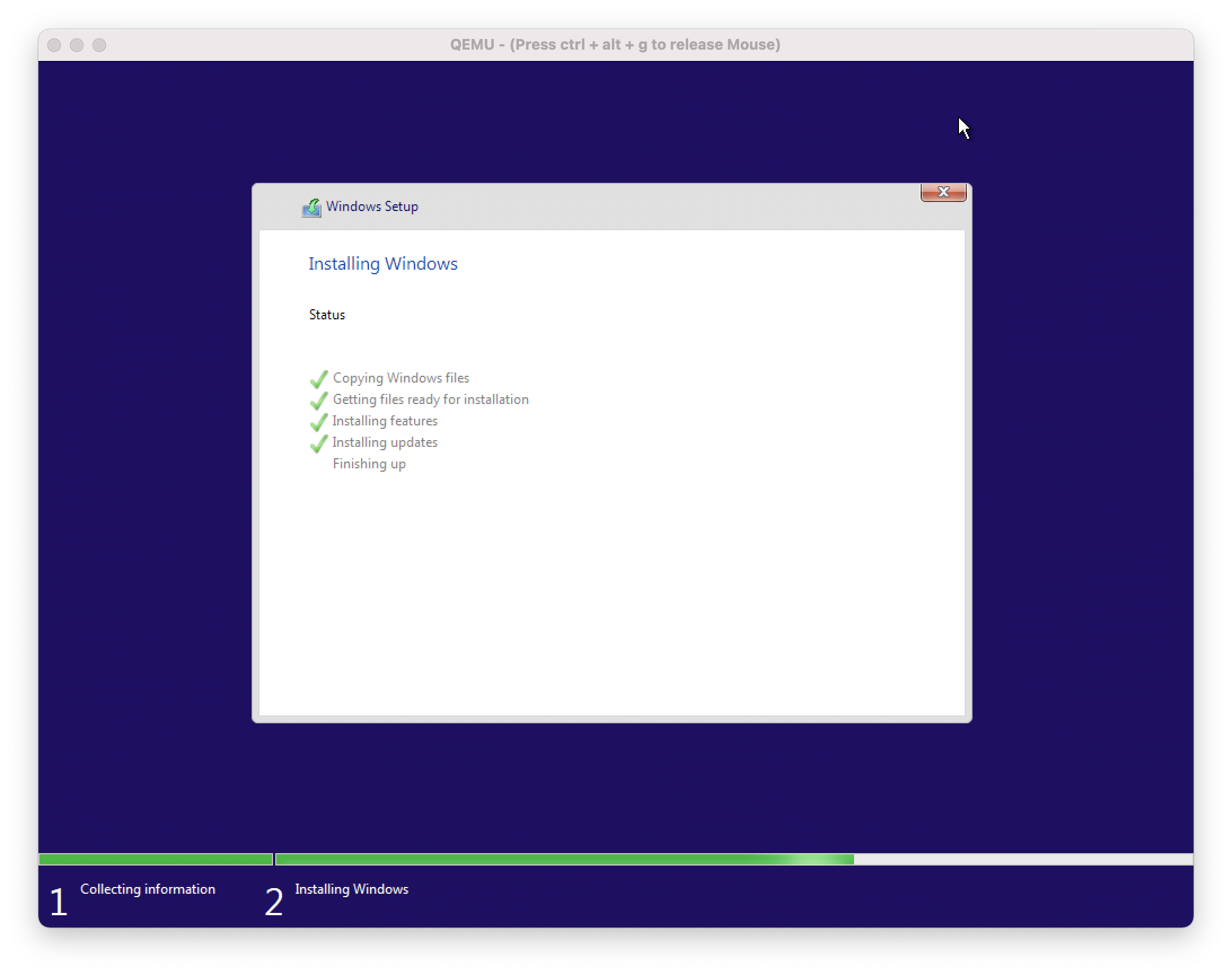
qemu-system-x86_64 -L pc-bios -boot d -m 2048 -hda myimage.img -cdrom Win10_20H2_v2_English_x64.isoQEMU with Sound
Check my guide on QEMU screamer which emulates Mac OS 9 - OS X 10.14 with sound.
</section>
-
A Threat To Democracy Part II.5
I feel yet again compelled to post again about politics after doing some weekend reading.
A Reuters photographer on the scene said he heard at least three different rioters say they wanted to find and hang Pence, who supported certifying the results of the election. - "It was supposed to be so much worse", The Atlantic
Some of the MAGA mob rioters who stormed the US Capitol smeared their own feces throughout the building and left brown 'footprints' in their wake. - MAGA mob rioters smeared their own feces in US Capitol", Dailymail.com
There's a weird schism where reality has been politicized. There's a non-trivial number of people who believe that top democrats run a "secret" child-trafficking ring, liberals "hate America," even moderates like Biden are somehow both communists & socialists, that wide-scale voter fraud was committed and that COVID-19 is a hoax, Obama was either a secret Muslim/born aboard, and these beliefs lead people to storm our National's capitol. It's a literal shit-stain on democracy as we know it.